




























With the festive season well behind us and the year speeding by already, we are into the swing of Field Days and have seen the busiest part of peak season for Fencing Contractors.
The awesome summer weather was a long time coming, and I’d say there were a lot of contractors playing catch up.
The Board is a couple of meetings into the year, and we’ve been working on organising the upcoming Best Practice Days, webinars and other events around the country – including our annual conference. More information on these can be found throughout the magazine.
In February, we were humbled to be able to go to the East Coast region to give away gates, gudgeons and insulators. This came about because of our “Help a mate, buy a gate” fundraising campaign and the epic support of FCANZ Partners Gallagher, Beattie Insulators, Farmlands, Stihl and Summit Steel & Wire. The cyclone recovery work in the area is ongoing more than a year later, and every little bit of support really does help.
Industry training has been fairly steady. There are Level 3 and 4 courses currently available for enrolment.
We need to see enrolments coming in for these courses to continue, especially considering the upheaval within government departments, restructures and entities being disbanded. Bums on seats is what will see the continuation of these NZQA backed courses. On that, I am fortunate (sometimes unfortunate) enough to see what goes on behind the scenes to make these courses come together. If you or your staff are completing these courses, please make sure you are doing the work required to enable the tutors and support staff to get the results through.
The reviewed FCANZ Strategic Plan has been finalised after much consultation and many hours of debate. This is now being made widely available (see page 10) and will enlighten many on the direction of the Association.
I’d like to make special mention to our Partners for their ongoing support of the industry, we look forward to working with you throughout the year, especially in
the lead up to the National Fencing Field Day and AGM/Conference in Christchurch. We all really appreciate the effort and input you all have to the Association and members.
Cheers, Phil
 Phil Cornelius President
Phil Cornelius President
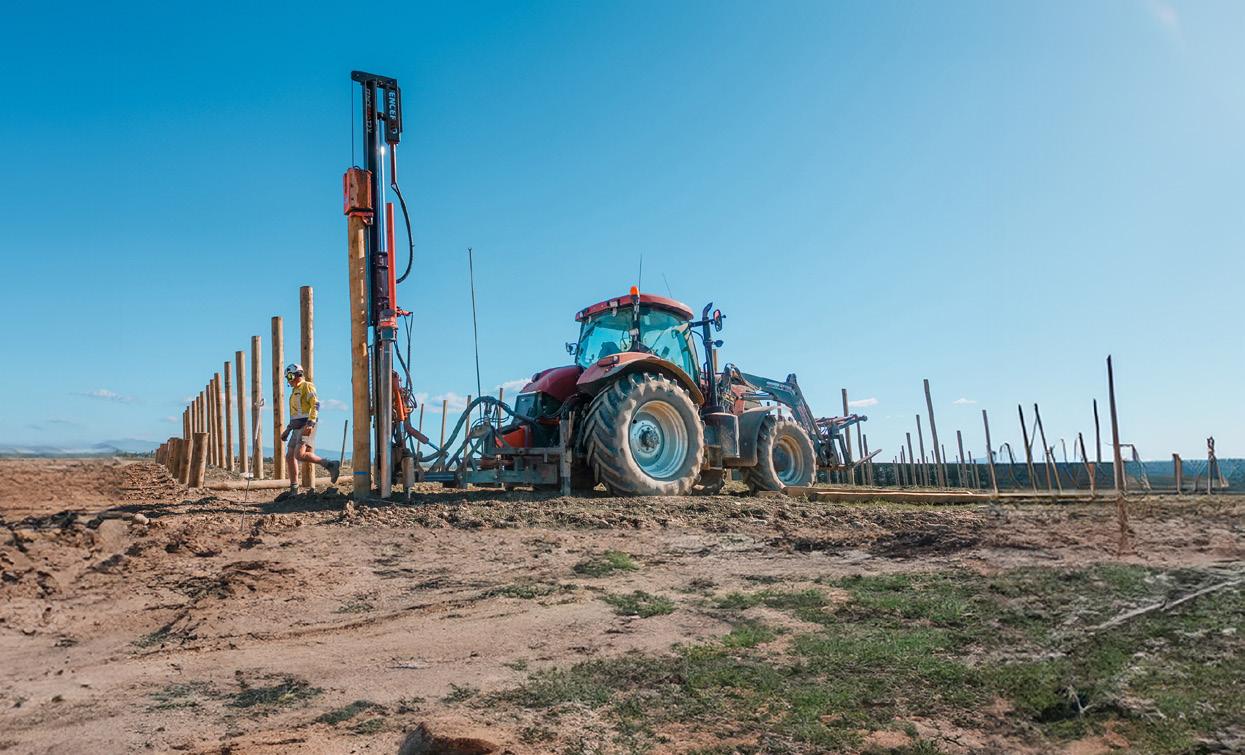
To raise the profile of fencing as a professional trade, delivering high quality work and adhering to best practice standards.
The month of December is always mad, and there resounds a client viewpoint that the world ends on Christmas Day because they all want you prior to Christmas - this certainly rings true for the lifestyle market.
That being said, the Board got in an early December meeting and - in what seemed like short succession, a mid-January meeting. Being conscious of cost savings, meetings are being held near Auckland Airport, with some of the Board Zooming in.
One of the focuses at the moment is on policy; going through and tidying up existing Association policies and creating policy to fill in the gaps. This is partly in relation to the Board’s governance, Code of Conduct, Complaints, partner policy, etc. The Board manual, including these governance policies, has been
incomplete but is in the process of being finalised for sign-off.
Event planning is another focus, working out locations for Best Practice Days and the logistical details, Field Days involvement, Career Days, Clash of the Colleges, etc. The November 4WD two-dayer was a big hit with those who attended and another one is being planned for the Wairarapa, with the date to be confirmed once we have spoken with the landowners.
With the number of NZQA Level 4 Certificate in Fencing graduates, the push is on for transferring existing Certified Fencers across to Accredited Fencing Contractors and bringing through the new system Certified Level 4s (which is a foreman level status) and Accredited Fencing Contractors (which covers the Principle and Business).
If you’re confused by this, please read the paperwork on the application forms. Yes, this Board is well aware of the name changes over the years and the simple need to get this promoted to outside bodies and work on the credibility of this qualification endorsement.
Currently 2024 does not seem to be firing like we all want it to. Certainly, work is out there, but there’s some real hurt in effect with commodity prices and running costs. The Board has been working hard to reign in the current financial year’s expenses and is working on a realistic 2024- 25 budget that will still work towards delivering the Association’s strategic objectives.
Written by Debbie WhiteOrganising for Conference 2024 is well underway, and once again, the programme looks fantastic. This year we look forward to seeing our FCANZ members and partners in Christchurch, at what has become an annual trip for many people.
Our Business Staples webinar series is now locked in for the year, with some big names lined up to share their knowledge with members. Keep an eye on your emails, and the FCANZ website and Facebook page for confirmed dates and topics.
This year sees the team delivering a number of Best Practice Days around the country. If you haven’t been to one of these before, they are well worth attending if there is one near you. Head to the events section of the website for details of the Best Practice Days, webinars and Conference. www.fcanz.org.nz/events
The team have been working hard on squaring away our strategic plan for the next five years. Part of this has resulted in the creation of a new tagline that sums up in simple words exactly what the Association stands for: Supporting & Advancing Industry Best Practice. It is essentially our ‘elevator pitch’. You will start seeing this used across our advertising, replacing ‘Setting Industry Standards’, which had been used previously.
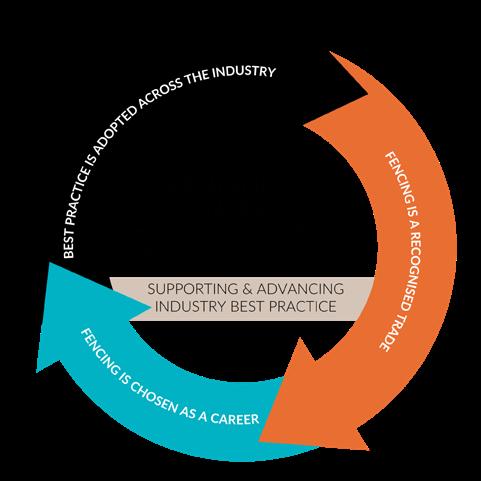
Did you catch FCANZ in the media in the past few months?
The ‘Great Gate Giveaway’ generated quite a bit of media interest and was covered in a number of print publications. FCANZ President Phil had a great chat with Dom from Rural Exchange about the event and why it was so important to the Association to help those impacted by Cyclone Gabrielle more than a year ago. You may have also heard radio adverts for the Join FCANZ campaign. The campaign was delivered across a number of marketing channels, so it will be interesting to complete the analysis and see which has been the most effective.

The newest FCANZ Bronze Partner is well-known to most. Milwaukee Tool offers a full range of power tools, hand tools, accessories and storage solutions designed with professional trades in mind. Based in Auckland, Milwaukee Tool New Zealand is dedicated to catering to the ever-growing demands of the job site and supporting all tradespeople to be the best they can be.
www.milwaukeetool.co.nz
In late February, FCANZ gave away 100 farm gate and gudgeon sets and 10,000 insulators to farmers in the East Coast and Hawke’s Bay who were still dealing with the after-effects of Cyclone Gabrielle.
The Great Gate Giveaway was the culmination of fundraising efforts in the 12 months since the cyclone and was made possible thanks to the support of Association Partners Gallagher, Beattie Insulators, Farmlands, Stihl and Summit Steel & Wire. The equipment retails for more than $35,000 and was distributed at the East Coast Farming Expo held in Wairoa on 21-22 February.
“We are a year on from the cyclone, and some of these farmers are still unable to contain their stock. You can’t farm like that. As an Association, we hope this giveaway helps ease some of the financial and mental strain that these farmers are feeling,” said FCANZ President Phil Cornelius.
Recipients were nominated by FCANZ members based in the area and the local Rural Support Trust co-ordinator to ensure the gates, gudgeons, and insulators made it to those really struggling to get on top of their stock fencing.
Family-owned New Zealand manufacturer Beattie Insulators donated 10,000 insulators to the cause. “We were delighted to be able to work with FCANZ to help these farmers. We know it’s only a small part, but every bit helps,” said Ivan Beattie, one of the second-generation company owners.
The Association also hosted a BBQ on the evening of 21 February for FCANZ members, gate recipients and their families. FCANZ Patron Craig ‘Wiggy’ Wiggins, and creator of the “Lean on a
Gate, Talk to a Mate” movement, was available to talk with people about their concerns for themselves or their friends.
“Some of these farmers are doing it really tough, so it’s never been more important for people to reach out to their mates and check they are ok. It can be hard to start the conversation, but Lean on a Gate has resources and people to help, no matter what you’re dealing with,” said Craig.
The Association plans to be back in the district in early autumn to deliver another two-day re-fencing event, during which time fencers will volunteer their time to reinstate essential fencing.
Originally planned for late 2023, the event had been delayed to allow the ground to dry out – a plan hampered by recurring rain events. “The reality is that the scale of damage in the area means it will be some time before permanent fencing work can be started in many areas,” says Phil. “It makes sense that we come back in autumn and assist with the reinstatement of essential fencing then.” To learn more about Lean on





Enjoy a day out with Fencing Contractors Association NZ and see best practice fencing techniques showcased in practical demonstrations throughout the day.
Fencing Best Practice Days are a great opportunity to learn new skills, see the latest fencing gear and meet likeminded fencing contractors in your region.
Industry Partners, FCANZ Board members, Health & Safety advisors; Tertiary Education providers and Fencing Contractors from across the region.
*Subject to availability
Fencing Contractors, Fencer Generals, Horticulture workers, Farmers and those starting or interested in a career in a fast-growing industry.
Cost (includes lunch)
Non-Members: $40
FCANZ Members: $20
FCANZ Employee Members: $10
Keep an eye on your inbox, FCANZ Facebook and the FCANZ website for when registration opens for each event. Note: Dates and locations are subject to change.

Late last year, the 5-year strategic plan was signed off by the Board. The strategy sets the overall goals for the Association and the framework for developing an action plan to achieve them.
It involved the team stepping back from day-to-day operations and asking where the Association is headed and what its priorities should be. While the plan has some lofty goals, it is also flexible and agile enough to respond to change, allowing current and future Boards to ensure that the Association is always on track to support and advance industry best practice.

Our mission: To raise the profile of fencing as a professional trade, delivering high quality work and adhering to best practice standards.
Vision: FCANZ is acknowledged as the authority within the fencing industry, contributing to a high level of workmanship across diverse fencing sectors through the dissemination of industry knowledge and standards, while encouraging fencing as a career path.
Best practice is adopted across the industry Fencing is chosen as a career Fencing is a recognised trade
Strategic Initiatives:
• Increase the level of professionalism and skills across the industry.
• Encourage implementation of best practice techniques into everyday systems.
• Ensure industry knowledge is shared and expanded upon.
• Model Best Practice within the Association.
Tactics:
1. Finalise and deliver the FCANZ endorsement programme, including the auditing process.
2. Facilitate and support apprenticeship schemes.
3. Uphold and promote Best Practice Standards in the rural fencing sector.
4. Develop and disseminate Best Practice Standards for other fencing sectors.
5. Develop and disseminate industry standards e.g. wire standards.
6. Engage with public sector organisations to encourage adherence to industry standards.
7. Develop and monitor training systems for members that reflect industry best practice.
8. Deliver training and upskilling opportunities at FCANZ events to showcase industry best practice, including Conference, National Fencing Field Day and Best Practice Days.
9. Deliver in-person or online business best practice training on areas such as compliancy, H & S, wellbeing.
10. Develop and maintain Association operational policies such as dispute management, and member disciplinary processes.
11. Provide an industry mediation/ disputes service.
12. Support and promote fencing competitions/NZFC.
• Promote fencing as a career to encourage more people to enter the industry.
• Develop partnerships with schools/ education facilities to support pathway students into the industry.
• Grow Association membership by increasing and promoting tangible membership benefits.
Tactics:
1. Achieve membership growth through education about Association activities and benefits.
2. Expand member benefits and value proposition including networking opportunities to unite industry and support feeling of a united entity, a “go to” place for information.
3. Develop partnerships with training providers and academies.
4. Support the development of a managed apprenticeship program.
5. Develop resource packages for career seekers incl. school leavers, industry career change and immigration.
6. Implement industry promotion and advertising to key influencers (e.g., parents, heads of Agriculture in schools) showcasing diversity of fencing.
7. Become active in gateway programs and find methods for members to participate in these or other work experience offerings.
8. Provide Member support to prepare for work experience students. e.g., guidelines, training.
9. Participate in targeted Trade Days for school students and Trades Academy participants.
10. Develop work experience initiatives with central government agencies such as, MSD, MPI.
11. Provide a job opportunity listing service.
• Demonstrate industry support through the development of mutually beneficial partnerships.
• Increase awareness of Fencing as a skilled trade.
• Develop an understanding of the industry’s advocacy and lobbying needs.
• Ensure stakeholders embrace the value of FCANZ endorsements.
Tactics:
1. Increase depth and breadth of Association partnerships with a robust partnership strategy.
2. Create and support sector/regional subcommittees.
3. Develop Central/Local Government database.
4. Engage with public sector organisations to promote the use of Accredited fencing contractors.
5. Develop the media database & maintain connections/rapport.
6. Conduct annual member surveys to identify trends.
7. Position WIRED content, features and advertising to support fencing as a trade.
8. Improve social media engagement with Partners and members
9. Produce regular e-newsletters which provide value for members and partners.
10. Continue with website development and online resources with UX at front of mind.
11. Ensure that FCANZ events are well attended by partners and members.
12. Utilise Partner communication channels to circulate key FCANZ messaging.
13. Work with a Patron to increase the reach of Association.
14. Build relationships with other trade and Primary Sector organisations.





Fencing Contractors Association NZ (FCANZ) is the industry body supporting the fencing industry of New Zealand.
Established in 2006, FCANZ aims to raise the profile and standards of the fencing industry, growing the market for fencing contractors and others associated with the industry, and ensuring Fencing Contractors Association NZ is the first port of call for those seeking a fencing contractor.
Boost your business by being listed on the FCANZ ‘Find a Fencing Contractor’ directory, helping the public find contractors in their area. Enjoy free promotion through campaigns that attract potential clients to the directory which is visited more than 25,000 times each year!
Receive a new member Welcome Pack which includes a branded cooler bag, hi-viz vest, hat and other merchandise.
Plus, enjoy access to exclusive offers and unparalleled support from FCANZ Partners.

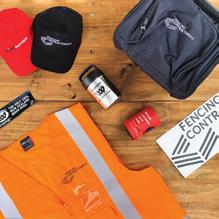
FCANZ’s affiliation with Federated Farmers gives all members a complimentary Federated Farmers membership – worth $499, including access to free legal and employment advice, group purchasing opportunities and much, much more.
All members receive four editions of WIRED magazine per year worth over $80
WIRED is the official quarterly publication of FCANZ, and is New Zealand’s only fencing industry magazine. Each issue contains a host of informative news, business & industry insights, human interest articles and information specific to the fencing industry.

FCANZ members also benefit from:
• Belonging to an Association of like-minded individuals
• Regional fencing Best Practice Days
• Access to free business best practice webinars
• Subsidised Annual Conference tickets
• Use of FCANZ logo to differentiate your business from your competitors
• Creating industry-wide connections through networking opportunities with members and Association partners
• 10% discount on Site Safe membership
• Free job, tool and equipment listings on the FCANZ classifieds web page
• Certified Fencer and Accredited Fencing Contractor industry endorsements to prove your quality
Firstly, let me say THANK YOU FCANZ!
Over the last two years, the generosity shown by FCANZ members towards the Lean on a Gate, Talk to a Mate campaign with over $30,000 donated by the conference charity auctions has allowed the Whatever with Wiggy Charitable Trust to grow significantly. We now have a great website which has so many tips, tools and good pathways to mental and physical wellness and nationwide recognition of what we do and the services we provide. Check out the leanonagate.co.nz website and know that I will always be grateful for your help, and that help has saved lives. FCANZ, again, I say thank you!
To be asked to be your Patron and to facilitate a judging panel for the young fencer awards has also been a highlight. To be associated with this organisation of great people who work hard and are proud of their toil while setting and lifting industry standards can never be taken for granted.
We all face challenges in our lives, which can put us in a position of high anxiety and stress and create a negative space to live in. I hope by writing in here, talking at events and being a part of FCANZ, we can form a relationship where you feel you can be your best, or if not your best, then able to connect with us, check out our website and make the changes necessary to have a strong professional life balanced with a happy and supportive personal life. That’s right, a ‘Work/Life Balance’. You are the most important cog in the wheel, your success depends on being able to perform.
This year, I was asked by Luke Gibson, whom I met at the fencing contest at the National Fieldays, to come to Indiana and be a part of their Fall Fencing Conference. I was nervous about this trip as I know what I know in New Zealand; what we do here makes a difference. But could I go to another country and get results, help people, and ultimately make a difference? Luke was confident, so I packed my bags and flew to Indianapolis, and was driven to Worthington, Indiana. Within a short time, I found myself in deep conversations with fencing contractors and merchants from all over America and two not-bad Englishmen.
Connections and friendships that will last for as long as I’m above ground!
Over the three days of Conference, counting the first night of campfire introductions through to the contests and speakers, we talked a lot of topics. Tony Thornton, who owns Thornton Fence Consulting Group, led the charge, educating people about the business and profit-making part of being a fencer, relationships with staff and clients, and ultimately being successful in life. I’d like to see Tony attend our conference here and speak, there would be something for everyone.
Were they ready to talk Mental Wellbeing? I’m still not sure, but heck, did they ever open up and get involved. To say I was often overwhelmed by the outpouring of gratitude and their investment in what we discussed and workshopped is an understatement. For two days “great people who work hard and are proud of their toil while setting and lifting industry standards” (just like NZ fencers), connected, dug deep, looked for answers and found support. I again had a great appreciation for what I am lucky enough to do, and again humbled to the point of being overwhelmed…
Fencers all around the world are cut from the same cloth, we are a community of international chapters/organisations that I would like to see more collaboration between. Exchange programs for our youth, conferences being attended by international guests and speakers and competitions where everyone is able to be lifted by the best to be their best.
I was awarded the Top Gun award at the conference (literally given a rifle) for ‘delivering the most’ to that event, but what I got back from attending was more than I gave, I’m sure.
When asked by Luke what was my summary of the conference I simply replied, “He tangata, he tangata, he tangata”! The people make the industry, and they are the most important part of the industry. The conference served them well!


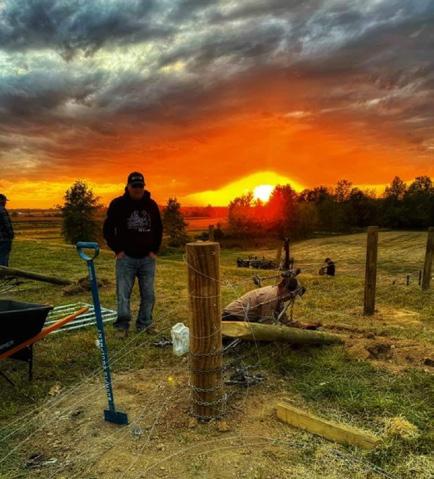




Planning is well underway for what is set to be a bumper FCANZ Conference this August.
Resilience and reinvention are not new concepts for Kiwis, especially those who work on the land. In an uncertain economy, outside-the-box thinking can be an invaluable tool for business owners. Many service, retail and hospitality businesses embraced the ‘pivot’ during COVID and succeeded because of it.
Exploring how fencing contractors can visit opportunities that ignore “the box” entirely without stretching themselves too thin or diluting their core business, is what Conference24 is all about.
Open to all current FCANZ members and their partners, the three-day event will once again provide delegates with a chance to have a say in how the Association runs, see the latest and greatest fencing tools and techniques, embrace business-best practice learning and enjoy the unrivalled networking opportunities.
AUGUST
WEDNESDAY 7 AUGUST
National Fencing Field Day (NFFD)

Come along to the 4th annual NFFD to see the latest fencing gear, watch best practice demos, and wrangle a bargain from exhibitors. This year will see the return of the “Show Us Your Toolbox” competition for those who drive to the event.
We’ll also be running another “Ladies Who Lunch” event for the long-suffering partners who aren’t so keen on spending the day in the field.
This year, we’re working on a venue with some wet-weather contingencies, as no one wants a repeat of last year’s icicle fest! Travel to and from the NFFD and entry into the event are complimentary as part of your Conference ticket.
Join us for the ever-popular Mix & Mingle dinner for a chance for a casual catch-up with acquaintances old and new.
This self-pay event will be held at Lone Star Spitfire – a mere 5-minute walk from the hotel.


Today we get down to business. As usual, the day will kick off with an update about what the Board has achieved in the previous 12 months and what is on the plan for the next 12 months. This is followed by the Annual AGM, during which time the Board will be decided, and any Association rule changes will be voted upon.
This year will see four of the seven Board positions up for renewal due to our retirement-by-rotation policy. If being involved in the direction of the Association is something you have been considering, then now is your chance. While the incumbents may look to stand again, this doesn’t stop others from putting their names in the hat. If there are more nominations than positions, it will go to a confidential vote, with the results notified later in the day. Nomination forms and role descriptions will be available on the website from April.
The AGM will be followed by our keynote speaker, who will ensure delegates walk away knowing more than when they arrived. Later in the afternoon will see the Member Feedback Forum, which is when you, as a member, are invited to comment on Association activities and contribute to the forward direction of FCANZ.
Dinner & Bingo
We like to mix things up occasionally, so this year, instead of the usual (extremely competitive) Quiz Night, quiz-master extraordinaire Stephen Caunter will be running a highly entertaining bingo session. Join us for dinner, and then see if the numbers will fall your way for some great prizes!
Note: we are aware that due to the state of the economy, times are tight for many, so there won’t be an impromptu auction this year.

This morning we’ll be visiting some unusual fencing around the region before heading to a delicious lunch at one of our favourite spots. After lunch, you need to get set for an adventure!
We know how you all love a competition, so this year we’ve got something special planned for the afternoon. We’re going to keep it under our hats, but we can confirm that it IS a competitive teams event, and there will be great prizes! Wear gear that is comfortable to walk in and bring your lateral thinking brain. We can confirm that it absolutely does NOT involve fishing.

Gala Dinner & FCANZ Industry Awards
We finish off the day in style at our smartcasual dinner and awards ceremony. This year, we will not only recognise Trainee of the Year and Emerging Talent – Youth nominees and recipients, but we will be adding two more awards to the suite. Full details will be in the June WIRED and in your emails – watch that space for how you can submit a nomination.

Conference24 will be held at the Sudima Christchurch Airport. Located within walking distance from the airport (but with well soundproofed rooms), the Sudima also offers plenty of complimentary parking for those who will be driving.
The team at the Sudima have created a code for FCANZ members to use to secure a discount when they book online or through reception. Bookings for the rooms are now open, so get in quick to secure a great price! The discount expires at the end of June.
Book Online: www.sudimahotels.com
Booking code: FCANZ24
Hotel: Sudima Christchurch Airport
Group Name: Fencing Contractors Association - FCANZ Conference
Confirmation Number: 9877602
Arrival date: anytime between 05-08-2024 and Departure date: 10-08-2024
We’ve opened the portal for ticket purchasing early this year, since you can already book your accommodation.
Early Bird tickets are $390+GST per person and are available until 31 May 2024. From 1 June tickets will be full price at $450+GST per person.
Book your ticket now and lock in the great prices for conference and accommodation. www.fcanz.org.nz/conference24
Learn more about Christchurch at www.christchurch.nz
Best Practice Fencing Techniques | Practical Demonstrations | Competitions Tools, Machinery & Vehicles | Activities for all
Wednesday 7 August 2024
10.00am - 3.00pm
Christchurch
FCANZ Conference delegates – Free
FCANZ members $10
Public: $20 | Students (5-18yrs) $5
Under 5s – Free
• Fencing technique demonstrations and discussions
• Fencing and machinery exhibitions – come along and talk to their reps
• New product releases
• Interactive competitions
• Be in to WIN the Best Ute Toolbox competition!


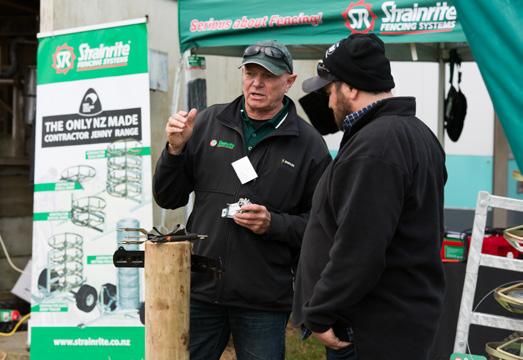 Christchurch
Christchurch



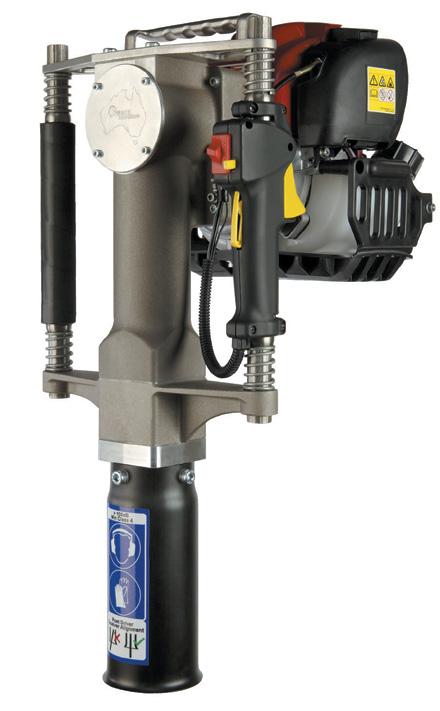
Fencing Contractors seem to have an affinity with 4WD utes. It’s a well-known fact that a ute is commonly the top-ranked item to be factored into one’s asset business startup.

Indeed, throughout a fencing contractor’s business lifespan, a 4WD ute continues to receive top billing. It doesn’t seem to matter if it’s a pimped out (accessory wise) latest model, or a cherished dependable 1997 model with a few seasoned dings. At least one of our members has owned a Toyota Hilux from new, that went round the clock and ticked over again from zero.
Fencing Contractors often work in amazing locations, and their access to many enviable properties means they could also double as tourist guides with off-road adventures.
Given this combination and having been dragged along with the whole 4WD scene throughout my married life, an opportune conversation with Scott and Anna Heasley, down at the Dunedin Conference in 2022, meant organising a 4WD trip for our members through some of Scott’s client’s properties – most notably the iconic MacDonald Downs – was a no brainer.
Having been in the Lees Valley, I asked about linking this up and ending the trip in Oxford, and Scott saw to that as well. We had options of starting in the
Awatere Valley, Marlborough or perhaps coming down through the Rainbow from Nelson, but it was decided for us when Mike Renner (Renner Fencing) jumped on board, organising a start location from his yard at the start of the Awatere Valley.
Thus were the origins of the FCANZ great 4WD adventure in November 2023; meeting up at Mike and Olivia Renner’s, with a quick look through one of Renner’s yards, up through the Awatere Valley, overnight in Hamner, the next morning down through into MacDonalds Station, out through the Lees valley into Oxford, with dinner at Rangiora. That’s a quick summary, though this misses a number of key elements.
With 17 vehicles attending, the attendees came from as far south as Balclutha and Invercargill, and as far North as Auckland, with Masterton (Tim McKay) and Galatea (Scott Graham) also represented. Along with the usuals, it was nice to see some faces of members who we hadn’t seen before, which was one of the interesting aspects. We also had two partners attending – Brendon Crequer from
Waratah and Ivan Beattie from Beattie Insulators. Following a group photo, the group was tasked with getting to know each other and were told that there would be a name quiz at the end of the trip, which I was determined to win, but I think Georgia Douglass might have taken out those honours.
We drove in convoy up the Awatere Valley Road with Mike and Terry Renner in the lead and John and Carol Noakes as tailend Charlies. When you’re driving through an area as scenic as the Molesworth, there’s often a question as to the history of the area and what goes on in terms of farming, etc. That’s one of the reasons this trip was so interesting, stopping off and having morning tea in the Upcot Station shearing quarters (thank you Friends of Seddon School, who supplied morning tea and lunch), then looking through the shearing shed (Upcot supplies merino wool to Icebreaker). Next, we walked across over to the old saleyards for the district, which Terry Renner helped to build in 1986 and used to hold 7,600 sheep. They ceased using the yards when foot and mouth entered the area.

Upcot Station’s Bill Stevenson met us further up the road, the third generation of stewardship of the Station, with one of Bill’s daughters, Louise, taking on the running of it. Bill’s talk was an interesting insight into the station’s running, stock numbers and breeding, and the challenges and success of the calicivirus in controlling rabbits in that area. Upcot has a horse breeding program with some very nice horses leaning over the fence begging for a new home (some were for sale).
On the Upcot saddle (1,200 metres above sea level), we stopped to look at the views, and naturally running along the saddle was a Waratah brand fence, complete with Jio Star posts and wire. Brendon gave a talk about Waratah’s
performance in high country such as this. Ivan Beattie also talked about his insulator products, again with their suitability for high country fencing.
At Molesworth Station, we stopped for lunch at the Cobb Cottage, which was precluded by an interesting talk from Jim Ward, who manages Molesworth as a productive 182,000 hectare farming and recreational unit. Molesworth is 60 kilometres in length and about the same in width. Jim talked about a concentrated effort towards lessening stock numbers, changing farming practices and improving economic returns in doing so, while balancing farming with recreational usage and sustainability. Horses are still widely used on Molesworth, and as we drove
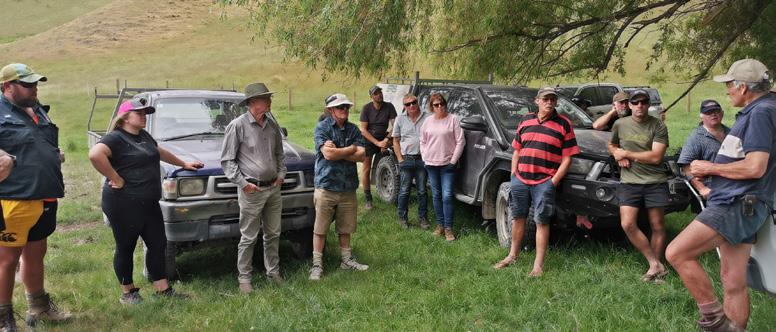


along, we saw numerous loading banks where the horses were trucked along to mustering points for offloading. Three of the shepherds were involved in the talks, and it was interesting to hear how they coped with the isolation. The future of Jim’s farm lease is in jeopardy given DOC’s purchase of the land from Landcorp, with a review being undertaken as to the future of managing the land, which, from listening to Jim’s knowledge and passion for putting the land first, was incomprehensible. After a quick drive around the Molesworth infrastructure, we were on our way towards Hamner, with the amazing scenery becoming tarnished with wilding pines. There was evidence of some attempts to control them, but it’s a huge problem.

FCANZ Administration Manager Jeanette Miller had organised the motel and a buffet dinner. Some beers amongst a tailgate meeting, aka standing at the back of the ute in the motel car park with a beer in your hand, helped dull the pain of overly expensive drinks at the bar, but the accommodation was very nice, and dinner was tasty. We woke up to a moister day with fresh snow on the mountain tops and predicted rain, which was a shame as Scott and Anna, our Day 2 leaders, had a good offroad route organised once we got into MacDonald Downs (11,333 hectares).
On the way in, we stopped at Waikari Kitchen in Waikari to pick up a prepackaged morning tea and lunch (recommendation – stop there, never drive past if open), and then we pulled up at the beautiful MacDonald Downs homestead and gardens for a hugely entertaining talk by Bill Paterson, and a look over the Station’s maps and historical photos.
Moving along, we started towards an excursion up over saddle, but

was latched from the inside. One can only imagine the robust debate that followed, as to whether to climb up through the dunny hole and who was going to do that, to be able to unlatch the door.
Onward and upward, then descending, we drove, entering the Lees Valley, stopping at Wharfdale Station. Along the way, we saw a good deer fencing job, which member George Williams had been a contractor on. On hitting the main road at Oxford, a few headed off, but the majority of us had dinner at the Plough Hotel in Rangiora, with thankfully cheaper drinks.
The trip was well organised by Mike and Terry Renner, Scott and Anna Heasley and

unfortunately, the wet combined with long grass wasn’t feasible for several of the vehicles, along with not wanting to leave damage, so we turned around and made towards a picturesque batch of bush alongside a river for a combined morning tea/lunch. A light drizzle came across, but it was hardly noticed as we all grouped together and talked about all sorts.
Scott had gone beyond the call of duty, or should that be the call of nature, by installing a long drop for the ladies. Given that we were miles from anywhere, this was a feat involving a digger, a 44-gallon drum, an outhouse, a dunny seat, and a No 8 wire solution for a toilet roll holder. Apparently Scott realised, as the outhouse was being lowered into position, that it

Two things stood out on this trip. One: what a nice bunch of people were on the trip and how well everyone mingled. Two: the calibre of Bill Stevenson, Jim Ward, Bill Paterson and their families, past and present. If High Country farming is in the hands of these types of people who are proud of their heritage and contributions, their commitment to sustainability and improvement, then high country farming in New Zealand remains a strength in the future of farming.
Such was the enjoyment of the trip that an across-Station off roader on/near the Wairarapa coastline is in the early stages of planning. The timing will be confirmed after the landowners and route have been established.
Article written by Debbie White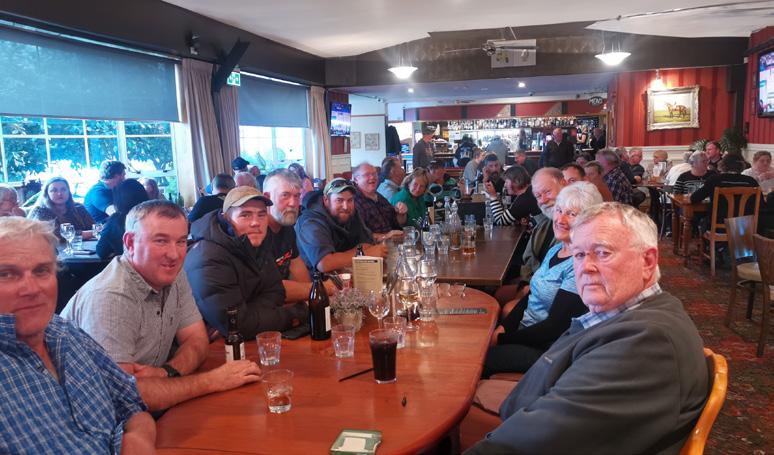

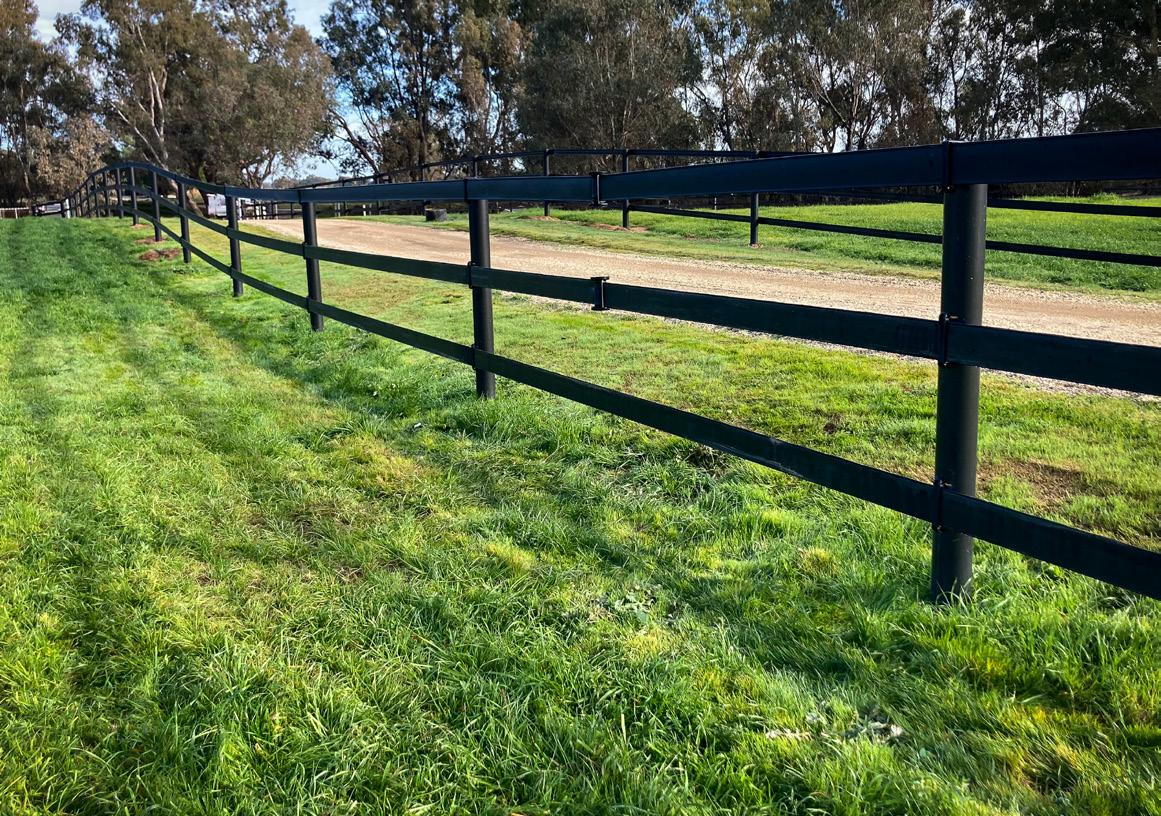






















Introducing the newest business tool from STIHL: STIHL Commercial Online. You can now shop online for your business while continuing to use your local STIHL SHOP’s expert knowledge and services. STIHL Commercial Online is a tool to keep you and your team working.
One of the benefits is the 1 hour Click and Collect service through STIHL SHOP; by choosing your local store, you can see if they have the machine or accessory available for you in store at that moment, with our live-updating stock levels. Once you have ordered, it will be prepped by the experts at the STIHL SHOP for you.
If your local STIHL SHOP does not have your selected item in stock, you can buy online and have it delivered to you. Organise your product to come to your
home or office so you don’t have to send the apprentice off-site during the day to pick it up. Save your valuable work hours and get exactly what you need with free delivery on your order.
Through STIHL Commercial Online, you can link your month-end-type account that you have with your local STIHL SHOP and purchase machines and accessories as you need them. Or use card payments for your purchases. Set up multiple authorised users through work email addresses linked to your account with different levels of purchasing power! Having a month-end-type account is at the discretion of individual STIHL SHOPs.
Make your admin easier - each purchase made through your account can be tracked against projects with a purchase order field.
To get signed up today, contact your local STIHL SHOP and request online shopping for your business account. If you are a company and don’t have a business account yet, you can get signed up to
both at the same time. Enquire through your preferred STIHL SHOP or online at STIHLSHOP.co.nz www.stihlshop.co.nz/ business_account/create
 Article supplied by:
Article supplied by:
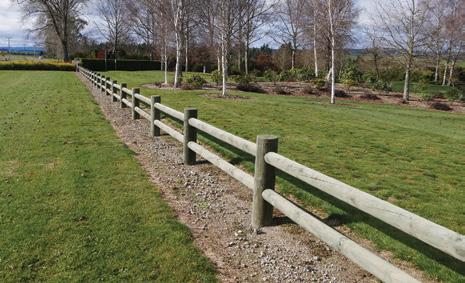


reputations— there’s no comparison
Our truly best-in-class Stockade post staples are now going to be proudly manufactured in New Zealand. Still the same superior staples delivering a consistent stronger, longer hold on the fence line — and designed to last the lifetime of a fence so fencing contractors only return to admire their endurance.

Same superior staples, made in New Zealand
Plain and barbed, post and batten… our whole staple range will be New Zealand-made
There’s no comparison: divergent point profile and ultra heavy 90% zinc:10% aluminium coating for durability.
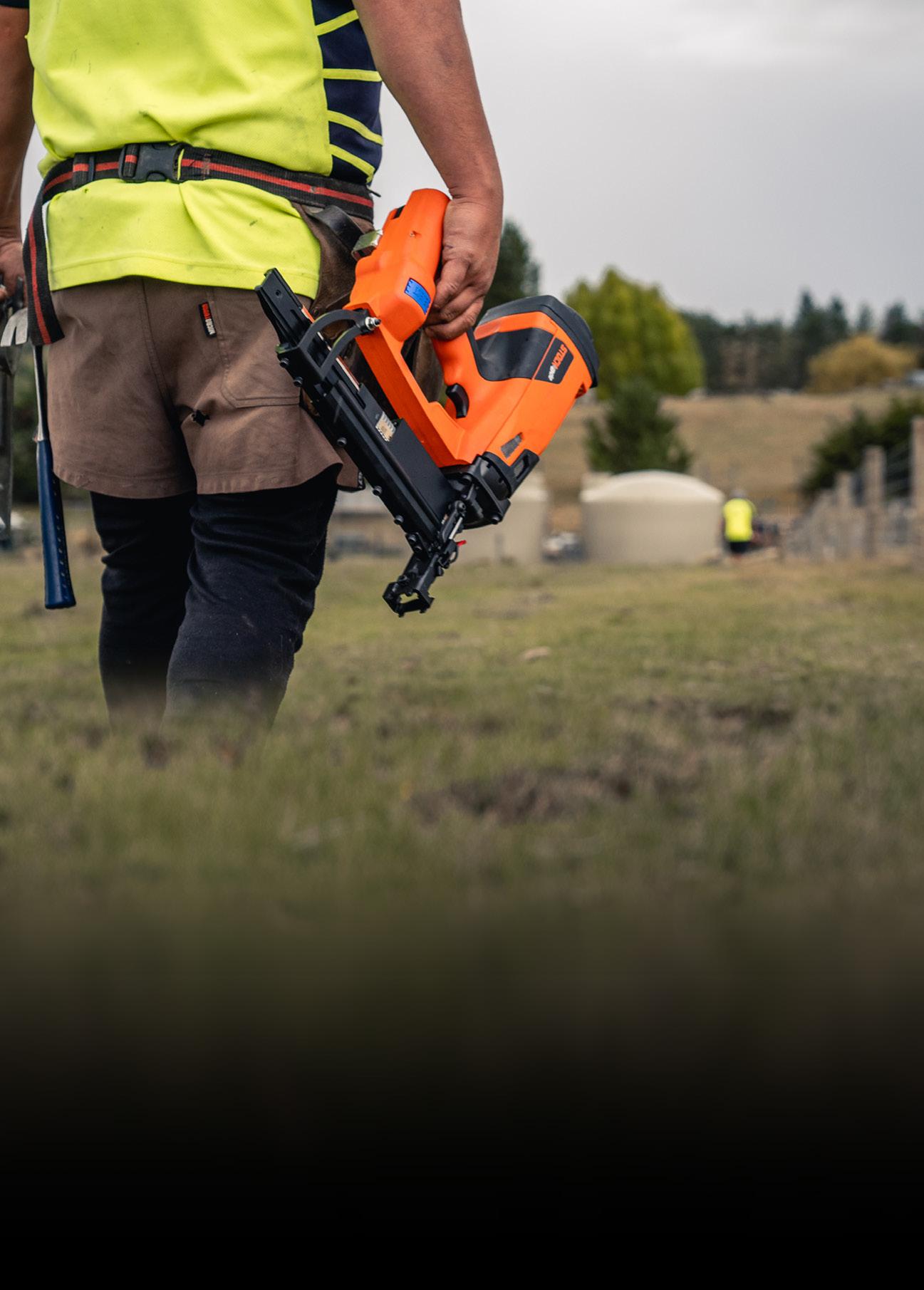
New look packaging for Stockade’s 4mm barbed impulse and pneumatic post fencing staples is making its way onto store shelves and will soon be loaded into ute trays around New Zealand.
A fresh look: modern, clean, and dynamic
From the outside, fencing contractors will see the difference. Inside the new packaging, it is the same truly superior quality staple — with one key change: all Stockade 50mm staples, compatible with ST400i and ST400 power staplers, are now proudly made in New Zealand.
Manufactured from pre-galvanized wire, with a heavy coat at 240g/m3 of zinc alloy at a ratio of 90% zinc: 10% aluminium, Stockade staples are extremely durable. Many other staples across the market use a 95:5 zinc aluminium ratio, which offers a lower durability than the 90:10 coating.
Graeme Young, Stockade engineer, says the move to manufacture all Stockade staples in New Zealand is a very satisfying one. “We have the full circle, R&D and production, right to the fence posts, happening right here in New Zealand.
To know our staples are contributing to New Zealand’s local manufacturing and supporting our business and communities is a real bonus.”
The zinc-heavy alloy used on Stockade staples, with twice the amount of zinc than other manufactured staples, makes a big difference when it comes to standing up against heat extremes, moisture, timber tanalising agents and other factors on the New Zealand fence line.
“With the 90:10 zinc to aluminium mix, Stockade staples provide a best-in-class defence against corrosion and, alongside the high tensile and yield strength, they are made to last for the life of the fence.”
“Other design features include Stockade staples’ divergent point profile and waterproof collation tape,” he says. “The divergent point profile forces the staple legs to spread apart as each staple is driven into timber. In turn, its additional holding power ensures a formidable grip
and the withdrawal force required to remove the staple is markedly increased.”
The staple crown is formed specially to grip common New Zealand fencing wire sizes, especially when fixed on an angle. The diameter of the staple’s eye was specifically designed to reduce the occurrence of wire chattering in winds, placing the staple on an angle also helps.
Each Stockade staple is designed to work in tandem with the driver blade of Stockade power staplers minimising any possible damage to the staple crown’s zinc alloy protective coating on delivery to maintain the high structural integrity of the staple.
A truly superior staple and premium cordless tool development go handin-hand for Stockade. They are the two components of its total system for superior, consistent results on the fence line. All Stockade staples, in the new packaging, are being locally produced in New Zealand.

“ With the 90:10 zinc to aluminium mix, Stockade staples provide a best-inclass defence against corrosion and, alongside the high tensile and yield strength, they are made to last for the life of the fence
New Zealand has always been home to the research and development of Stockade staples.
Graeme Young is one of the engineers at the forefront of Stockade’s post and batten staples development in New Zealand over the last two decades. He says it’s great to see the Stockade staples manufactured here too.
What is the perfect staple?
One which holds firm for the lifetime of the fence or trellis system. Holding power is the whole purpose of a staple, so the staple needs to be uncompromising from both a corrosion and a withdrawal standpoint. Also, it needs to stand up to the environment. It has to tolerate temperature extremes, animal movement, stock pressure for the life of the fence, and heavy rainfall, water run off or crop loads.
Two decades ago, what was your big vision?
We were after that perfect staple for farming, contracting, horticulture and viticulture systems. Fortunately, New Zealand provided us with the ideal rugged testing ground to develop a truly superior staple.
How did you create the superior staple?
Creating the perfect staple was a considered and rigorous process – and clever engineering. We talked extensively to farmers and contractors about staples. It started from there. We talked about their issues with staples chipping, rusting out, and their holding power. Then, we set out to find ways to improve the staple performance. Over the years, we have designed and trialled a number of iterations, different coatings, and leg designs.
What were you after?
Ultimately, we were in pursuit of increased durability. In New Zealand, most new fences are built using medium or heavy galvanised wire with a standard zinc/aluminum coating. All in all, this means many staples on the market start to rust well before the fence wire… and every farmer would expect their fence to stand up for at least 30 years, so should their staple.

What did you need to consider?
To be best-in-class, we wanted to make sure our staple has the right coating, right tensile strength, right depth of drive, no damage to the staple crown when it is driven in, and specially shaped driver blades. All those things need to be correct.
How did you go with your pursuit of durability?
We created a heavier coat containing 90% zinc and 10% aluminium. This ensures superior corrosion resistance over standard hot-dipped galvanised staples — and a stronger, longer hold. Our Stockade staples have six times the corrosion protection compared to standard zinc galvanising.
What’s one thing more people should know about staples?
Not all staples are created equal! When you want a staple to hold the strain and last the distance, look for consistent quality and strength.
What are your thoughts about Stockade staple manufacture in New Zealand?
When stock walk through a fence that has failed, it is annoying and costly. The value of a good fence is priceless – so creating a product that offers real long-life performance in the field and allows farmers and fencing contractors to get on with the job is extremely satisfying. Having the staples manufactured locally is really the icing on the cake. It’s a win-win situation for Stockade and the industry.


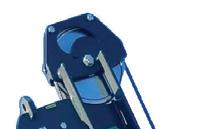


While kids’ safety is the end game for school and pool fencing, there’s a lot more to it than whipping up an impenetrable barrier.
In the last year, Mike Renner from Renner Fencing has put in fencing for three schools and two pools around Marlborough’s Awatere Valley. The jobs have taken technical attention, relationship nous and a good grasp of contemporary design.
“Pools are never easy,” says Mike. “It pays to do your research ahead of time. Getting in and knowing the rules helps a lot when quoting. Rules and regulations can differ across council areas, and a client might want a certain thing but that might not meet the criteria.”
Fencing contractors can usually find rules and regulations for pool fencing online on the local council’s website.
Pool covers are a case in point. Popular in recent years for keeping debris out and keeping warmth in, covers are often also used for stopping children from falling in unsupervised. Now, in Marlborough, they are no longer approved under the local council regulations and fences must go up around the pool.
Mike says many residential pools are close to the house, which has implications for doorways.
“Doors must lock: sliding doors cannot open more than one metre. There might be trees, shrubs and other bits and pieces around for shade. If any kid can climb up and over, then that tree has to come out. Fence height needs to be 1.2m, at a minimum, and either solid or
vertical slats no more than 100mm apart with horizontals 900mm so kids have nowhere to put their little feet to climb.”
The visual appeal of pool fencing has a large bearing on what clients end up running with. Clients look to Mike for ideas around what will look good and allow them to make the most of their scenic views. He usually follows the process of finding out what the client wants first, has a frank discussion on what won’t work, then offers ideas.
“ It pays to do your research ahead of time. Getting in and knowing the rules helps a lot when quoting





“Some clients have done their research in the beginning,” he says. “A select few come armed with a clear idea of what they want, but most will want your input first. A handful of brochures with pool fencing designs is very useful. You can add your touch, and the client can add theirs.”
“Some more expensive fence materials, like glass, are popular first choices, but it can come down to budget. Then, there’s weather patterns — where the sun comes up, where the prevailing winds are. These impact what you put in. There’s all that to tack on too.”
Schools – there’s a lot to discuss
In comparison to pool fencing, design input for a school fence is minimal. Unsurprisingly, fence design parameters are laid out as part of the Ministry of Education tender process. Most school fences are 1.8m high. Mike says this is the standard for a school which may have a child who the Ministry considers a “runner”. School fences have the same principles as the pool fences – they should not be climbable, to keep children in and safe when unsupervised.
“Getting on with the Ministry of Education project manager as well as the principal is the key to managing school fence jobs,” says Mike. “There is a lot to discuss, then we devise a plan that is best for everyone. Spotting risks, raising them,

keeping open communication, providing alternatives keeps school projects on track, and we do everything there is to help them achieve what is to be achieved.”
“With schools, when putting fences on boundaries, you need to deal with neighbouring residential properties, roads and reserves, and footpaths. It can open a can of worms. Getting the boundary surveyed before you start is ideal, if the Ministry doesn’t have a current survey in their tender already, it is the way to go.”
Once Mike knows where the boundary sits, it’s a case of working out whether the new fence can run along or whether it might need to deviate from the legal boundary – and following through with subsequent discussions with various people and organisations impacted.
“For one job we are doing, the boundary is out on the footpath. Obviously, the council wasn’t too keen to rebuild the path.”
Trees are an issue too. Some are valued for their shade. Schools might want to keep them, so Mike looks at moving the boundary fencing around them.
Mike’s local school, Seddon School, was the first combined school-andpool fence job. The land was raised up along the boundary line, so the fence moved inside the boundary to reduce the work for the caretaker to maintain this uneven ground. First, the decision to vary the boundary fence was made by the principal, then passed by the Ministry.
School fence designs in Marlborough fall into two categories depending on the shared boundaries. All residential properties are solid fences; the rest, like main entrance road reserves and council boundaries, are see-through panel fencing. Mike uses standard paling, iron and Smartwall for the solid fences and powder-coated steel or aluminium panels. Almost all posts are augered and concreted in.
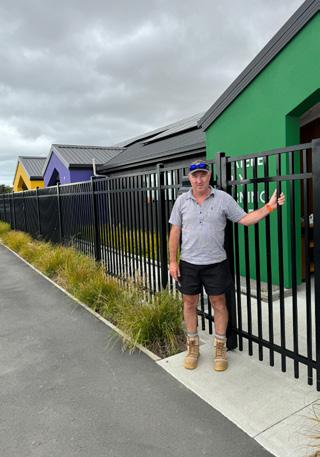
“Another vital task is to find out about services. Most schools are land mines! There is a lot going on under the surface. Contact your local power supplier for locations and Before You Dig for phone and fibre. Councils can help with water and wastewater pipes, but, often, the best information is from local knowledge like the caretaker.”
“The right tools and machinery to do the job are up there in my mind. We use hand augers or, even better, a small digger to auger the holes. String lines, levels, and good battery tools are key. A dumpy level to get the fence heights correct and level is useful.”
“It is always easy if you are working with flat and level ground, but in most cases, you will have to deal with sloping ground. Solid fences can be run with the ground on a sloping level, but you can’t do that with panel fencing. Either you need to use racking panels on steep slopes or stage the fence by lowering or raising each bay or every second, for example, in the same amount.”
Mike enjoys going the extra mile with school fence work.
“At Seddon, my local school, I wanted to do whatever I could for the school because they have helped me along the way. We had pulled down the old fence, so I had a skip for us. While we were there, we chucked in another skip, for nothing, for the school to do a tidy up. Little things like that, going that little bit further, helps them out along the way.”
Article written by Megan Fowlie
“ Crafted from hot-dip galvanised solid steel and expertly powder-coated, this pool fence not only meets the highest safety standards but also adds a touch of sophistication to its surroundings
Otago Engineering has been a trusted business in Dunedin for over 65 years, previously called A. J Grant after the previous owner, Alex Grant. The business began in a backyard garage, building roof racks and gates from recycled conduit pipes. Sons Allan and Bruce took over from their father in 1976.
During that time, A. J Grant introduced IRONGEAR as a major facet of the business. IRONGEAR included wrought iron products, gates, elegant balustrades, fencing, ornate staircases, and specialised in swinging and sliding security gates. You can still see some of the beautiful wrought iron fences and security gates produced decades ago by A. J Grant and Brett St John around Dunedin as IRONGEAR produced work for the likes of Port Otago, Milton Prison, the University of Otago and the Dunedin Chinese Gardens. Long-time employee, Brett St John spent his life honing his craft and would forge intricate pieces manually. To this day, Otago Engineering continues to have a forge and can complete historical fence pieces using traditional techniques.
Andrew and his sister Lauren took the helm of A. J Grant in 2019, rebranding to Otago Engineering. Andrew began his engineering apprenticeship with A.J Grant in 2007. After qualifying as an engineer, Andrew embarked on his overseas experience, returning to A.J Grant in 2015 to take on a managerial role. As Bruce and Allan looked to retire, Andrew and his sister, Lauren, decided to take on the business.
With over 65 years as an engineering business in Dunedin, it was their aim to continue, expand and further improve: supplying and installing a wide range of steel and iron products, including gates, automatic gates, fencing, balustrade, handrails, clothesline, spiral staircases and playgrounds throughout the country with their main focus being on the Otago region including Alexandra, Clyde, Queenstown, Cromwell and Wanaka.
Andrew brings over a decade of experience from New Zealand and Australia as an engineer to Otago Engineering, and Lauren comes from a background in graphic design and administration. Together, their focus is on bringing quality and creativity to every
project they complete, helping businesses throughout Dunedin and New Zealand with steelwork and wrought iron pieces.
One such project completed in the heart of Queenstown at the end of 2023 has once again allowed Otago Engineering to showcase its prowess in design, fabrication, and installation with the completion of a meticulously crafted pool fence featuring two pedestrian gates. The project, from inception to installation, exemplifies Otago Engineering’s commitment to excellence and innovation in engineering solutions. Crafted from hot-dip galvanised solid steel and expertly powder-coated, this pool fence not only meets the highest safety standards but also adds a touch of sophistication to its surroundings.
Otago Engineering’s design team took on the challenge of creating a pool fence that not only adhered to safety regulations but also seamlessly blended with the natural beauty of Queenstown. The decision to use hot-dip galvanised solid steel not only ensured the durability of the fence but also provided an aesthetically pleasing finish. To enhance both the longevity and visual appeal of the pool fence, Otago Engineering employed a high-quality powder-coating process. This meticulous application not only protects the steel from corrosion but also allows for the seamless integration of the fence with its surroundings. The colour choice of matt black was selected
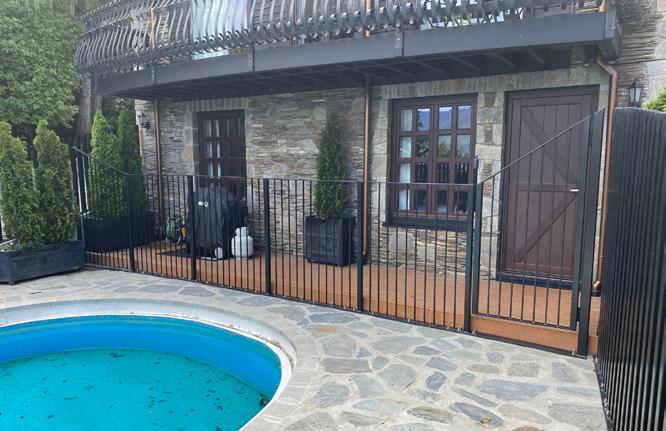
to complement the natural elements of the Queenstown environment, ensuring the fence becomes a harmonious part of the landscape and surrounding buildings. The initial challenge of this project was in the drawing and manufacturing stage: because of the inconsistent curve of the fence, the initial measure had to be extremely precise as each angle and slope had its own radius. It was due to Otago Engineering’s extremely talented CAD drawer and fabricators that they had the ability to create such a challenging project. One of the notable features of this project was the absence of a top rail, a unique design choice that posed its own set of challenges. Otago Engineering, known for its innovative solutions, successfully

overcame these challenges, creating a fence that is not only structurally sound but also visually appealing. The installation of a pool fence becomes particularly challenging when dealing with uneven terrain, such as the uneven stone finish of the ground in this Queenstown project. Otago Engineering’s installation team, equipped with experience and expertise, tackled this challenge head-on. Precision and attention to detail were paramount in ensuring the fence maintained its straight lines and uniform height, all while adapting seamlessly to the natural contours of the stone-laden landscape.
Otago Engineering’s successful completion of the pool fence with pedestrian gates for Queenstown’s Relaxaway Holiday Homes Alpine Cottage, stands as a testament to the company’s dedication to excellence in every aspect of engineering. From the initial design phase to the fabrication and installation, Otago Engineering has demonstrated its ability to overcome challenges and deliver a product that not only meets safety standards but also enhances the aesthetic appeal of its surroundings. Visitors to Relaxaway Holiday Homes Alpine Cottage can gaze upon this masterfully crafted pool fence, witnessing not just a safety barrier – but a work of art. Otago Engineering continues to raise the bar in engineering solutions, creating structures that not only serve their practical purpose but also contribute to the visual tapestry of the businesses and communities they serve.
Article written by Lauren Callander

















In March 2023, Agri-Fencing Taranaki was asked to look at a boundary fence for the Te Kura Kaupapa Māori o Te Pi’ipi’inga Kākano Mai I Rangiātea in New Plymouth. After meeting with the Property portfolio manager on the school board, we had a look at the boundary section of the fence.
The design brief was a bit different from our usual projects, that’s for sure! It had to be 1.8m high for the first section of the fence line, then the height could be dropped down to 1.5m. The height had to deter kids from ages 3 up to 12 from climbing or pushing through. It also had to stop tennis balls and such from running down the hill into the neighbouring property. There was an existing chain-link fence along the playing field, which we initially thought could be continued, but
we agreed it would give the fence line a bit of an industrial look, so we went for something with cleaner lines. This was certainly a bit different from our usual requests around stock management!
After exploring some options on a few fence designs, we came up with the idea of using equine netting at 1.5m height and using plain 2.5mm HT wire at 100mm spacings to achieve the requested 1.8m height for the first part of the fence line.

“ This was certainly a bit different from our usual requests around stock management!
Our fence proposal was accepted by the board, then it was a matter of scheduling the work over the school holidays, which at that point were just over a week away… challenge accepted! We scheduled a utilities detection service to make sure the fence line was clear of any underground services, then commenced with some ground prep and building of a small retaining wall to level the fence line and prevent dips. Another challenge included an undulating pump track which made for some interesting tractor balancing.
The result with the use of equine netting and plain wires provided a very tidy, robust fence, safe enough to keep the kids in. This was an enjoyable job and something different, with a good sense of achievement being able to contribute to keeping our tamariki safe at school.
Article written by Jeff Rawson

“Shall we tender for this GETS job for a school fence, Shaun?” asked our project manager, Jimmy.
Shaun, owner/operator of Davies Fencing and Construction, and my husband, doesn’t usually work on schools. He started out doing rural jobs in Whakatane fourteen years ago, and loved yarning to farmers and building relationships. Then he moved our family to Tauranga, grew the business to eleven guys, two office managers; Jimmy and Rochelle, bought a lifestyle property and an acre or so of land became storage for materials, machinery and a huge eye-sore of a burn pile (which I had earmarked for sunflowers, but ho-hum).
Shaun still loves rural fencing, but he quickly worked out that it’s a good idea not to put all his eggs in one basket, so he branched out into residential (highend) fencing and civil works (engineered retaining walls, lakes, boardwalks, stairs on bush tracks, bollards, decks, concrete works, skateparks, dog parks).
Shaun, being a Yes Man, replied, “Yep,” to Jimmy, then asked for all the details.
“It’s for Bellevue Primary School in Tauranga. They have a handful of kids who keep escaping, and they need a ‘better’ fence to keep them in.”
“A handful of kids?” questioned Shaun, “A $120k job for a handful of kids? I hope we get to meet the lucky ducks. Tell me the specs?”
“Ok,” said Jimmy, “It’s 260 metres and will also need about eight gates.”
“Great!” said Shaun, “I’ll give Ellie at Edgesmith a call, she’s awesome to deal with. When does it have to be done?”
“The two-week school holiday in October.”
“Sweet, we can fit that in.”
Jimmy and Rochelle worked on the tender together and submitted it. They chose a 1.5m high balustrade style panel fencing because of its strength and durability. They knew it was going to get a punishing from balls and the like at a primary school.

“ Shaun still loves rural fencing, but he quickly worked out that it’s a good idea not to put all his eggs in one basket, so he branched out into residential (high-end) fencing and civil works
They must’ve done a superb job of the tender because we got it.
On the first Saturday of the school holidays, we had another contractor come in and install about 100 metres of security fencing on a portion of the school perimeter so that on the Monday, the guys could start.
They began by stripping out the old fence. One guy on the digger, two guys doing the hard yards. It was a mishmash of wire, bits of tin, some palings, all bordering house properties. There was overgrown grass and shrubbery mixed in amongst it.
The following day, another three guys joined them. They followed behind the first crew and installed the new fence. When they had done about 100 metres, they moved the security fence along. The whole job itself was pretty simple to install, even when the new fence had to be built
on a section of retaining wall due to the height/fall restrictions.
The challenges arose when it came to the gates. The school had a rough idea of where the gates were to be installed, but they hadn’t confirmed. The issue was to do with emergency services access. The main access at the front of the school couldn’t reach the back classrooms, and they wanted another access down the back of the school but it hadn’t been built yet. The gates had to be custom-made to fit, so they couldn’t be ordered until decisions were made on the access, and the new fence was up.
A few weeks later, once we had the gates in our hot little hands, two guys returned to the school to install them. They were tricky to hang due to the undulating ground, but our guys did an epic job. This time, school was open, and they had numerous inquisitive kids come and ask a million questions. The guys wondered if any of them were the kids that the fence was built for, but they never did find out.
Article written by Angelena Davies
Fencing Solutions Waikato Ltd (FSW Ltd) have been involved with many pool, school and park fencing projects, having been the contractor to Waikato Kindergarten Association, Central Kids, and many private Early Childhood Education (ECE) centres for their fence and gate needs.
Timing always poses a challenge – ideally, being able to get work done in their holiday period. If we have to work when kindergarten is in, then the next challenge is answering all the questions from the 4-year-old onlookers from behind a temporary fence. Fielding questions like ‘What are you doing?’.
The requirements for ECE fencing and gates are as much to keep the public out as it is to keep the children in. It is unbelievable the number of instances of vandalism or theft from such an organisation. The focus first is on function: fences now are generally 1.8m high with a maximum gap between vertical rods of less than 90mm, flat top panel and commercial grade. Gates have heavy-duty self-closing hinges and in all cases, a pulltop latch that is lockable. In some cases we have installed a two-step unlock process with an additional magnetic slide pull latch. All of our fencing materials are sourced from Modern Fence Supplies in Hamilton.
Pool fencing is also one of the many services offered by FSW Ltd, working alongside pool companies who are installing a pool. It is often a step-by-step process where the pool builders will do all their ground works and surrounds. The pool needs to be fenced as soon as it has more than 400mm of water in it, in


accordance with the Building Act 2004, the legislation that governs pool fencing requirements in New Zealand.
The Buildings Act 2004 requires all residential pools and small heated pools with a maximum depth of 400mm or more require a physical barrier that restricts access to the pool by unsupervised children under five years of age .
A temporary fence is installed at this stage to keep the work area safe and away from inquisitive children. We will install a fence with a panel that has a NZSA approved PS1. For commercial sites, we are required to submit a PS3, which is a producer statement to warrant that the work completed is as planned and follows any engineered standards.
Glass fencing is another option that can either be bolted down with spigotts or aluminium posts. Glass pool gates are required by the Act to self-close and selflatch. The Act also requires mandatory inspections every three years to ensure compliance with the regulations .
The Building Performance website provides a comprehensive guide for pool owners to understand the pool fencing requirements of the Building Act 2004 (the ‘Act’). The guide includes information on why pool fencing is important, the types of pools that require a barrier, the

requirements for pool fencing, safety covers for small heated pools, applying for a building consent, and more.
Gates need to follow the rule of being at least 1200mm high, swinging away from the pool on self-closing hinges, and the pool latch needs to be self-latching. Over time, the springs in the self-closing hinges will soften. An easy self-check on gates is whether they can self-close from a distance of 100mm.
In the case of a glass gate, the opening latch must only be accessible from the inside and be 300mm lower than the top of the gate.
Another part of the Act that can be overlooked is that any climbable object must be at least 1200mm away from the outside of the fence and 300mm from the inside of the fence.
It is likely that local councils will require that the pool fencing be a part of the building consent. These plans will be approved by the council, and when the pool is complete, the fence will be signed off.
We get a number of enquiries from pool owners who have been notified that either their fence has failed an inspection or there is an inspection due. It is the responsibility of the pool owner that their fence passes the compliance test at any time.
Article written by Todd Sherburd



Stan comes from a very fencing-orientated family. His brother was a full-time fencing tutor at the now closed down Flock House Farm Training Institute. His nephew Trevor was a twice Golden Pliers Champion and Silver Spades Champion.
Stan was a familiar sight at the National Fieldays competitions every year for many years and has tucked a few finals under his belt.
In those earlier years of competitions, many tools and methods were developed, which happens in most facets of any type of competition.
Ingenuity really paid off. It’s likely that an exasperated “there’s got to be an easier way than this” led to the birth of many an invention.
For Stan Woolston of Cambridge, it also led to an Award of Merit, $100 and a hand-painted ceramic plate.
Stan was one of 53 who entered the inventors’ section at the Fieldays in the 1970s and his wire tension gauge was one of 10 to win the Award of Merit. The award is given to “proven farm equipment” inventions which have been on the market for up to 12 months, and the inventor must have sold some of the items.
Although a berry grower for four years, Mr Woolston was formerly a fencer and had often entered the fencing competitions at the Fieldays. In three separate years he fenced his way to the finals.
One of the most difficult aspects of competition fencing, Mr Woolston said, was getting the tension on the wires accurate. “Most people use a spring balance scale to check the tension,” he said, “but it’s very fiddly and there is a lot of human error.”
“I thought there must be a better way than that...” So, he set out to find it.
His first wire tension gauge came off the drawing board, and he put it to the test in the fencing competition at the Fieldays. His score for wires in the doubles was a perfect 10 out of 10, top marks. A friend from Putaruru, Colin Meredith, used the gauge in the same competition and scored almost top marks for his wires.
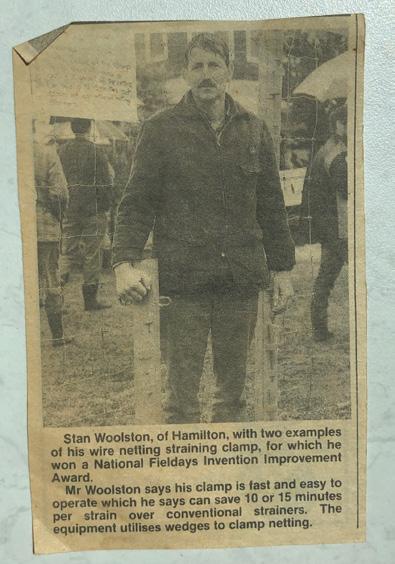

“It’s very simple and it has so few working parts. It’s accurate enough to be really effective. It really is so simple that anyone could get their tensions all right”.
The gauge is operated by passing the wire over a spring, which in turn activates a needle pointer. The amount of tension registers on the marked scale.
Stan holds a patent on his invention and more than one company showed an
interest in marketing it. “It has quite a potential I feel” Stan said, way back then.
In the late 1970s, Stan got sick of fiddling with a lump of wood and spring balance, so (drum roll please), the Woolston Wire Tension Gauge was birthed. He sold the rights to Franklin Machinery (now Gallagher), and the tool has moved since then and is now part of the Strainrite product range. It has changed very little since its conception.
I can quite confidently say that this invention of Stan’s is now part of almost every fencer’s kit, both here and overseas.
Good on you Stan – you’re a legend.
Article written by Nick Liefting
Name
Emile De GreeuwCourse
Certificate in Fencing (Level 4)

“ It focuses less on the fencing skills and more on running your business, bettering your brand as a professional, which is key

RETAIL
“I cross-credited my prior training and industry experience to be recognised for the Certificate in Fencing (Level 3). Then I applied for the Level 4 course,” explains Emile De Greeuw.
Emile is undertaking the Certificate in Fencing (Level 4) through NorthTec | Te Pūkenga, which is run nationwide.
“I enrolled because I wanted recognised qualifications, and fencing is an industry that is lacking a bit of recognition in that regard. Qualifications are somewhat of a new thing in the industry.”
Emile runs his own fencing business and often has people working under him whom he helps develop in the fencing industry.
“There’s a lot you need to be aware of when it comes to working with clients and companies. Things like liability insurance, progress reports, cultural reports, there’s a lot that comes into it. The course teaches you best practices and industry standards. It focuses less on the fencing skills and more on running your business, bettering your brand as a professional, which is key.
“I would recommend the course to established crews or people that are in their second or third year of business. There’s a range of reasonably experienced modules that you need to cover so it’s more achievable and relatable for those who have been in it for a bit.
“The qualification is all online which suits me as it doesn’t affect my day-to-day running of the business. I can get online at 7 o’clock which suits me and my family as the kids are normally in bed around that time.”
“There’s a lot of support from the tutor and the other students so it’s been easy enough to manage and it’s well worth it.”
https://www.northtec.ac.nz/programmes/ new-zealand-certificate-in-fencinglevel-4
COMMITTEE MEMBERS 2023/24
PRESIDENT: Tim Garrick
VICE-PRESIDENT: Owen Petersen
SECRETARY/TREASURER: Leanne Stanger
CHIEF JUDGE: Owen Petersen
COMMITTEE Debbie White, Shane Bouskill, Joelene Bouskill, Wayne Newdick, Paul Van Beers, Nick Liefting, Matt Jones, Mark Lambert, Tim Stafford, Mike
Cory


I have been coordinating the Certificate in Fencing Level 3 and 4 courses for NorthTec for the last couple of years. As most of you know, the courses were reviewed and reinstated in 2018 in their current format.
In 2018 we saw 11 students go through the Level 3 course. COVID hindered several courses through 2020/2021, but we still had good numbers in 2022, and roughly 70 across the country went through the training in 2023. In Level 4 (which launched again last year) we have seen one course of 12 complete and the mid-year intake of 13 is near completion with similarly good results.
The feedback on Level 4 has been excellent and the tutor David Horner is a great asset to the industry, in that he understands how contractors think. Together we try and align the timings
of the courses to what will work around people’s staff and businesses. This is also the same for Level 3, the tutors across the country are an asset to the industry.
In the last 12 months, I have been working with the online development team to integrate the Level 4 learning into an online system that will help aid and give the learner confidence that what they are doing is correct. This has been a huge undertaking, and it has led the way behind the scenes for other industries.
The fencing industry has lacked a form of continued recognised training. Yes, the Association has had its eggs in
this basket for a very long time, but the implementation and execution of those things has never continually lined up.
When I was in the rural banking industry, I inherently saw the very people fencers work for, downgrading the trade as if anyone could do it. Comments like “It’s just fencing, we’ll do it ourselves”. It used to annoy me, because they would be better sticking to their knitting and sorting their feed and cashflow budgets, than fencing for three months on a job that could be done in two weeks by a professional.
The industry needs to be recognised as a trade by not only the people in it, but
by any member of the public. Sure, within the industry, we can tell who is a good fencer and who is a rubbish one, just by looking at their work (and sometimes just by talking to them). I can’t fence to save my life, but I sure know what a good one looks like now after travelling the country looking at fences for days. This is what we want to get out to the general public, so they can make informed decisions and know that the contractors they are hiring have invested in training and business acumen. Not someone who bought a tractor and rammer and decides they’re a fencer. In shearing if you shear the skin of a sheep, ya mate next door kicks you up the jacksie and you get a tune up. Out in the back of beyond sometimes nobody sees a terrible fencing job until it falls apart and the neighbours have a stoush about stock getting out, or on a residential/lifestyle block the client wakes up every day to look out at their fence, with twisting rails or gaps in their palings the dog and cat can fit through. This is why the training and FCANZ Pathway go hand in hand.
Sure, some contractors and staff can complete these courses with their eyes closed. Do they?? No!! The tutors and I find ourselves dragging people along to get their work done before the end of the courses. There are students that are so diligent and have awesome time management, are great fencers and are the ones to showcase the industry. There are employers putting their staff through the course and I see the dedication and diligence they have in their businesses
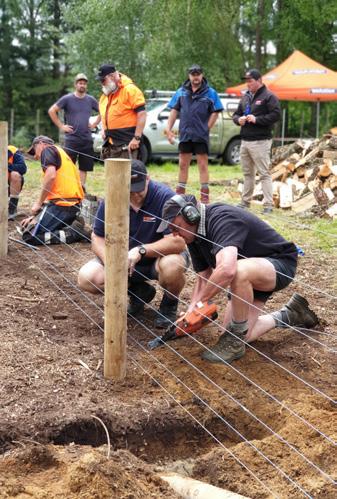
regarding training and health and safety - these are the companies we want showcasing the industry.
The courses are numbers-driven, bums on seats. Each fully enrolled student creates a funding mechanism that allows a course to be viable and enables us to pay for tutors and materials. The fee attributed to the learner from TEC is only generated once fully enrolled and attending. Attendance is a key factor. Each week, NorthTec are noting attendance; attendance to Zoom sessions, block courses, etc. If the attendance isn’t tracked, funding is
queried. If someone doesn’t attend, their funding is pulled.
If we don’t have enrolments, we have no funds to keep them going. There is only so much I can do. If the industry (THAT’S YOU, READING THIS) wants to be recognised and have NZQA backing, this is the only opportunity to maintain that. This is as close to an Apprenticeship as we will get at this stage, given the changes in the Tertiary sector with the new government and the changes to skills standards. We are setting things up in the way we provide these courses to hopefully align with an Apprenticeship when the time comes.
“ If the industry doesn’t use it, they’ll lose it
Justin Tilly NorthTec | Te Pūkenga Pathways Manager
If you’re wanting training and to align this industry with other recognised trades like building and plumbing, get on board and get training. Otherwise, it will be lost, more than likely never to return.



P
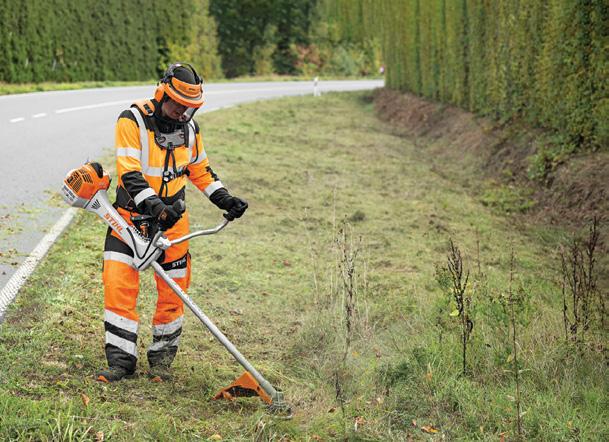




In our eighth instalment of our retaining walls feature, Nick Liefting takes us through the complexities of Tie Back walls.
Well, it is just that, the poles or wall face is tied back to some form of anchor.
A lot, or should I say most of you reading this article, have done tie backs in a fencing or horticulture application, which is usually the result of having nowhere to install a stay/strut.
The reasons for a retaining wall tie back are a bit different. The main reasons are:
• A high surcharge (the vertical pressure applied to the ground surface in the vicinity of a retaining wall) and ground bearing not at the preferred kilopascal (kPa)
• Severe toe slope and high surcharge, e.g. dwelling
• Due to height and/or proposed surcharge, pole diameters can be excessive and not aesthetically pleasing, so smaller pole diameters are used with a tie back
Although the primary function of a tie back is to anchor the pole back, as mentioned earlier, there are many different ways of doing just that:
Pole end connection:
• Continuous steel waler beam
• Individual pole
Anchoring end:
• Vertical timber or cast-in-situ concrete pole
• Ground beam
• Horizontal bored hole
Vertical positioning of tie back on poles: This is something generally calculated by an Engineer, but in simple terms, if you have a wall 2.60m high requiring 350 Small End Diameter (SED) poles, by placing a tie back 1.0m above ground, this enables 200 SED poles to be usedbeing more aesthetically appealing.
Pole end connections
The two methods are either an individual pole or onto a waler:
Individual Pole:
• The most common way is to drill through the pole and have a heavy washer, e.g. 75mm x 12mm, galvanised against the pole.
• The washer bearing surface should be trimmed flat. Care should be taken not to remove too much.
• Through the pole, a PVC tube is inserted, and the tie back rod passes through the tube, having a liberal amount of grease applied.
• Often a good idea is to place a neoprene washer between the galvanised washer and pole.
• If going through the pole is not desirable, a pre-bent galvanised
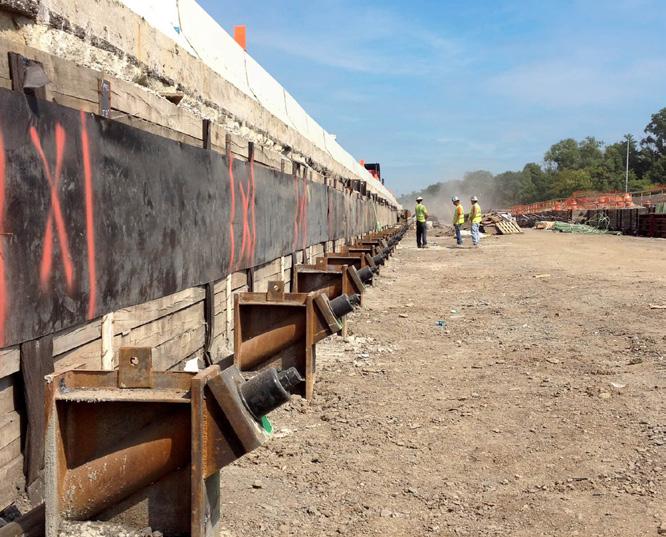



hoop can be placed around the pole and attached and tensioned at the anchoring end. I have seen walls using galvanised wire in this application. Yes, the walls were not high, 1.20m to 1.50m, and yes, thinner poles were used, and the wire looked very unobtrusive. But what was the wire, and how was it terminated? I would use 4.00mm high tensile stainless steel with a stainless-steel turnbuckle, as using a crip – being aluminium and dissimilar metals – is not good.
Waler:
• A waler is either wood or galvanised steel with the tie back fixings attached midway between poles. It is important that the walers vertical positioning is at 90° to the tie back element. We can only cut so much into the pole to achieve this, to avoid affecting the pole strength, therefore it is necessary to create wedge-shaped elements to place between the pole and waler.
• Of course, it is not necessary to have a continuous waler running the full length of the wall. The waler is just as effective being individual over two poles.
• Timber Waler: This is always aesthetically appealing; however, the size must be applicable for the job and is usually a minimum 100mm thick using SG (Strength Graded) timber or a round pole.
• With higher tie back loads, it is imperative to use galvanised steel walers. These are usually fabricated using a double I beam with a heavy square plate/washer welded on the face connecting the I beams.

There are commonly three different types:
• Continuous Concrete Beam: This type can only be applied if the ground behind the new retaining wall is being filled.
- Once at tie back height, a concrete beam is cast above ground, and PVC pipes are placed in the concrete to accommodate the tie back bars.
- The concrete beam can also be excavated and placed in the ground to save formwork.
- Trenches will then need to be dug for the tie back bars.
• Cast-in-situ concrete piles or wooden poles: these can be placed in the compacted clay backfill and left high to catch the compacted fill as it rises.
• Horizontally Bored Anchors: these are commonly used against an existing excavated face.
Horizontal holes about 150mm in diameter are drilled, often at a 20° to 30° angle, to a depth designed by an Engineer. There are two different forms of anchor inserted in these holes.
The first is what we call a Duckbill anchor, which is simply inserted into the hole at the end of the tie back bar, to the end of the hole. It is then tensioned, whereby one end will fasten itself onto the side of the hole and, by applying tension, the anchor will level out. That is all that is required.
The second system is more complex. A Reid Bar (much like a reinforcing bar, but
the deforms are a thread) is placed in the hole with wheel spacers attached and inserted into the end of the hole. The hole is filled with a high MPA grout that is pumped through a tube that goes all the way to the end of the hole, known as the tremie method.
Once completed, it is often part of the consent that tie backs are tested with various loads applied and held for a specified time and, of course, recorded.
Tie back walls are generally over 1.50m high and - most of the time - have a surcharge. So, it is then necessary to have a consent, whereby an Engineer will have everything designed.
I mentioned in a previous article that almost all gravity walls, in particular keystone walls over 1.20m high, are tied back.
The main form of tie back used is geogrid, which is placed between the blocks. There are various Tensar strengths of geogrid, and once again, the Design Engineer will calculate the one that is required.
Geogrid tie backs are used for other types of walls, e.g., cantilever walls. The bodkin, or something similar, is fed through the geogrid and secured onto the poles and waling. The geogrid is then tensioned, and engineered fill is placed.



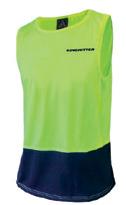

The team at FCANZ have heard a few anecdotal stories lately about farmers getting pinged by Police while driving their tractors, so we took the opportunity to have a chat with Senior Sergeant Hugh Tait, of the Commercial Vehicle Safety Team based in Dunedin, about how fencing contractors and rural contractors can make sure they’re keeping their employees and other road users safe while out and about in the tractor.
What licence is required to drive a tractor on public highways?
Class 1 restricted as a minimum. This will allow you to operate a tractor under 40km/h on the roads. Modern tractors can exceed 40km/h so ensure your staff are aware of the limitations if they are on restricted licenses.
Are track endorsements required for track machines?
The NZTA Agriculture Vehicles guidance states that tractors are not special type vehicles, however any motor vehicle that runs on self-laying tracks requires a T endorsement.
What conditions does a tractor have to meet to be warrantable / road-worthy / compliant?
Just the basics: if you’ve got good tyres, brakes and lights, ensure things aren’t falling off or protruding from it then it should be okay. Not necessarily clean and tidy, but the quality of the gear makes a difference. If operators are keeping on top of the little things, the big things take care of themselves.
Are you allowed passengers in the tractor cab?
All passengers should be restrained. We’ve probably all taken the kids for a ride in the tractor on the main road at one point. If there was an accident on the road and if WorkSafe got involved, the owners manual of the tractor typically states that the passenger seat is for training purposes only. In a worst-case scenario, you’d be in serious trouble, correct?
Yes, unfortunately. Speed would be an interesting one as well. If you’re doing under 40km/h as per the dimensions of the tractor, then you’d lessen the consequences. But like you say, if the manufacturer’s instructions state it is for training only, then it’d be pretty hard to explain what kind of training you’d be doing especially with a young child in the jumpseat.

When do you need to use lights/flashing lights on the tractor?
Ideally you’d have them operating continuously. Having headlights going and the beacon light on is good as it alerts motorists to a larger slow-moving vehicle. Steer away from having your hazard lights on. An issue we see reasonably regularly are tractors with hazard lights on trotting along nicely and then decide to turn right, across the highway. As they are slow moving the following vehicle tries to go around them, not realising that the tractor intends to turn right because the hazards have been on the entire time. Having your hazards on is probably more of a hazard than not having them on.
Do forward facing lights have to be able to be dipped? Are we able to use the big work lights across the top of the cab when driving?
When driving, your cab mounted work lights should be off. You should just have your normal road lights going which should have a dip function. Given how bright and strong work lights are, you’re likely to end up dazzling everything coming in the other direction.
“ Having your hazards on is probably more of a hazard than not having them on

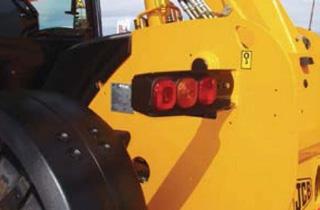
Is there a counter argument for where lights are generally front, centre and bottom of the bonnet? 9 times out of 10 if you crab your bucket around, the lights are facing the cross member of the loader so you’re not getting any vision out of it either.
Agreed - that would be good justification to have the cab/work lights on, so other drivers can see it from further away. If you’ve got the ability to only put two of the four work lights on, do that. Just use common sense.
Are there any other safety issues to consider?
Cell phones: sadly they are becoming more and more present in our lives and especially so for business purposes. I am sure we have all seen people in cars, trucks & tractors on the highway using a cell phone. If you haven’t got Bluetooth or an earpiece, avoid the temptation to be on your phone whilst driving.
Hazard Panels: we regularly see more European farm machinery coming into New Zealand, which come with the Eurostandard panels, red and white, instead of orange and yellow. Distributors know they can’t leave them on there, but some of them still do. Owners need to talk to their supplier to get these replaced so the vehicle is road legal.
Should the loader be up or down when travelling on the road?
An interesting one. If you look at the guide it talks about minimising risk to other road users and making it safe for yourself. What is the safest option? You just have to work it out for yourself at the time with the equipment you have. For example, if you’ve got the bucket up, gravity can make it top heavy and unsafe for the driver. With the bucket down it enhances visibility and the stability of the vehicle, but the bucket can be well out in front of the vehicle, which is
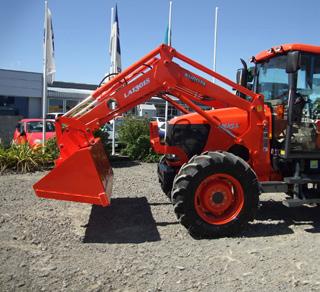
a hazard. You are potentially obstructing your lights as well. If you’ve got the bucket down, you need to be aware of the front edge and rotate up or down, ensure any spikes/tines are covered minimising risk for other road users.
What about driving tractors after dark? Basic lighting requirements are required – headlights, tail lights and amber beacon as a minimum. As per the earlier question be aware of leaving work lights on as they are generally brighter than most and can dazzle oncoming traffic.
Anything overdimension (over 3.1M) has restrictions that apply. There needs to be a marker light on the exterior of the hazard panels, but take practical steps to do what you can to make it safe for all road users.
What are the requirements/restrictions for A-frame utes behind tractors?
Users need to be aware that fitting an A-frame to a vehicle can affect the ability of the vehicle to absorb energy the way it was designed to do, potentially reducing the effectiveness of airbags.
Safety chains need to be attached between the A-frame and the tractor, and lights are required if the ute obscures the lights of the towing vehicle.
It really is down to the operator to make sure the A-frame is in good condition. We probably get one incident per year where there is a failed A-frame and the ute has taken its own path and ended up in a paddock or hit someone/something. It would be good practice to have the A-frame inspected as part of your prestart; around the welds, joins, couplings etc, and it can’t hurt to get an engineer to inspect annually. Our safety inspectors also talk about the connections to the chassis on the ute – keep an eye on wear/ tear around these connections.
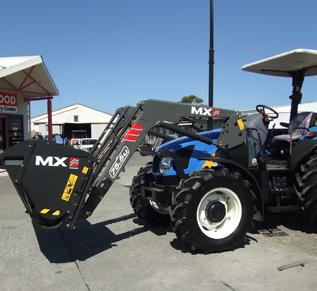
What about the towing weight for an A frame – are there any regulations for that?
No, it would be down to the tow capacity of the trailer. The quality of the metal or the boxing in the A-frame would be essential. It needs to be welded up by a Certified Welding Engineer who has experience in making A frames.
Is there a limit on pivot points?
Yes. You can’t hook a trailer on behind the ute which is attached to the A-frame. Overall length restrictions will also come into force (25m absolute maximum).
How common are accidents where tractors are involved?
Thankfully not that common but we probably get a couple a year. Unfortunately due to the size & weight of the machines there is often a fatality. When you’re working on farm roads, the rural back roads are typically smaller gravel roads and when you’ve got a tractor with duals on and at maximum width, coming around a blind corner or over the brow of a hill, that’s where accidents happen. And unfortunately, on a small gravel road you can’t do much to avoid it.
Is there anything tractor drivers can do to stop people from overtaking at stupid times?
Not really – you can’t control other drivers so you can only control your machine. People are becoming busier and in more of a rush, less patient if you like, so are prepared to overtake in silly spots. Be aware of your environment and what is coming behind you, identify safe areas and pull off where you can.
Operating heavy machinery on the road is a skill that should never be taken for granted, especially around those that are not capable or aware of the limitations of large machines.
Dashcam footage is increasing as Police receive footage several times a week from larger transport operators. Spreading the message that dashcam footage can result in fines or infringements all helps with improving driver behaviour. Cameras in vehicles can also be gold for operators when there is an accident, where the footage clearly shows the cause of an accident, reducing the risk for operators.
Further guidance on Agricultural Vehicles and A-frame towing can be found on NZTA’s website: www.nzta.govt.nz

In military training, they teach you how to look for warning signs that could affect the mission. They call this situational awareness.
Potential threats might include the enemy’s position, the current environment, the shape they are in mentally/physically or position if things went wrong and what the next move would be.
It’s the same in the trades business - there are always warning signs when your business is headed for trouble.
Having personally coached hundreds of trades businesses over the past twelve years, there are nine warning signs I look for. Deal with these early, and chances of success improve dramatically. Left too long, they can cause major problems at best and failure at worst.
Early warning signs:
Are you finding yourself struggling to secure enough work for your team? Or maybe you’ve noticed that the amount of confirmed work booked ahead is shrinking? When work starts to dry up, it affects the bottom line. Do you start discounting to get the work or wait it out until things get better?
It’s a situation some tradies are facing right now, and it’s not easy. But before you start slashing prices, here are a few things to consider.
Profits and margins can disappear alarmingly fast once you start cutting your prices, and here’s why.
Let’s say your gross profit margin is around 20%. If you reduce your prices on a job by 10%, the volume of work you need
“ Having a clear Target Gross Margin is like having a compass in the wilderness. Once you know where you want to head you can see clearly if you are going in the right direction and adjust
to complete just to maintain the same dollar profit increases significantly.
For example, if your break-even point is $100,000 per month at a gross profit margin of 20%, and you reduce your prices by 10%, you now need $200,000 of work to reach break-even. That’s twice the work, time, and effort, for the same result you were previously getting.
It’s a stark reminder that while reducing prices might seem like a viable strategy to attract more jobs, the impact on your bottom line can be significant. Not only does it increase your workload, but it also puts a strain on you and your team, sometimes compromising quality. Too many rushed jobs that go wrong can also affect your reputation.
So, before you consider cutting your rates, crunch the numbers and understand the real impact on your business’s profitability.
What’s your target Gross Margin?
Understanding your Target Gross Margin is crucial in determining which jobs are worth your effort.
Your Target Gross Margin is the percentage of profit you aim to make on each job after all direct costs, including wages, are subtracted. This margin should be high enough to cover your business’s overheads plus a healthy profit.
Target Gross Margin could be anywhere between 20% - 60%, depending on the trade and your position in the market - high or low end. I don’t like to see anything under 20% minimum in any trade; less than 20% is too difficult to make a profit. If you want some help to work out your target gross margin and where you should be for your business, then check out the “Pricing Strategy Session” at the end of this article.
Having a clear Target Gross Margin is like having a compass in the wilderness. Once you know where you want to head you can see clearly if you are going in the right direction and adjust. No more wasted money, time, and energy taking jobs that lose you money.
Your large client wants a better price, what now? Don’t just take this at face value. Test, question, negotiate. Why do they think the price is too dear? What are they comparing their quote to: apples with apples or apples with bananas? Is there more in their budget, or can you adjust the brief to fit?
Show them that your price is good value and see what happens next. Some will get it, and some won’t, that’s ok. The ones that don’t, fine, just move on to the next opportunity.
Eddie, a mentor of mine, would tell me, “15% of customers will always go for the cheapest option no matter what”. If another option is one dollar cheaper, they will take it even if the job is half as good. The clients you want are the other 85% who care about getting a quality job done right, hassle-free and are prepared to pay for it.
Remember, pricing isn’t just about numbers; it’s a mind game. The right way you present your pricing and value can make all the difference in attracting the right kind of clients and getting the work.
When my clients start telling me they are sticking to their rates, margins are increasing, and they now have plenty of good work lined up, that they don’t need every job that comes their way - I know they are on track.
Are you fishing in the right river?
Fishing is about being in the right place at the right time. The right bait at high tide will catch way more fish than at low tide when the fish aren’t around.
It’s the same with your business, are you marketing in the right places? Are you seen as the specialist or a generalist who does a bit of everything? The specialist attracts better clients and can charge more. That’s less work and more profit for you.
If your business is based on being the cheapest, that’s a problem. Firstly, you won’t be getting the margins you need, and there will eventually be someone else out there who will do it even cheaper.
A builder client, Celeb of The Decking Guys, was in the same predicament. He was working 80 hours per week, making no money with one part-time worker and struggling to find work. His clients kept asking him for lower rates. I told him to put his rates up and start specialising.
Within 12 months, he had a team of 11 and plenty of work. Check out his story on our testimonial page at https:// nextleveltradie.co.nz/real-results/
If you are relying on getting one quote or you can’t pay the bills, you need the job, so the pressure is on you. You are in a weak position and are more likely to cave on price to get the work.
“ Show them that your price is good value and see what happens next. Some will get it, and some won’t, that’s ok. The ones that don’t, fine, just move on to the next opportunity
A much stronger position would be if you have five other quotes you are following up in the same week with 3-6 months of work already confirmed. Now you are calling the shots.
If a new client is relying on a small number of quotes and doesn’t have enough work, the first thing we do is help them get their pricing right and find better jobs. This takes the pressure off and puts them back in control of their business.
If things are on the quiet side and you’re still not getting the work you want, then this could be the opportunity to consolidate and scale back a little. Move any bad eggs on and rebuild stronger. Better to have a bit less work for a while, than working your tail off and going backwards.
If you still want to reduce your rates to get a job short term to pay the bills, then ok. But make sure that this is a shortterm strategy and use it as motivation to position the business better so that you’re not caught out next time.
Sometimes, in a downturn, there will be less work for a while. The key here is to keep the business solid and profitable while looking for better opportunities, which long term is not cutting prices.
Worried that your pricing isn’t right compared to others in your industry, or need to get more profitable work?
Book our free 45 minute ‘Pricing Strategy Session’ at www.nextleveltradie.co.nz/ nextstep
 Daniel Fitzpatrick
Daniel Fitzpatrick





We have many clients undertaking water fencing projects this summer. Not just swimming pools, but dams, waterways, and ponds.
What are the key things you need to think about? It’s not just ‘can I swim?’
Preplan the task ahead: This is important – what risk is there to you and the team?
Your first line of defence against waterrelated hazards is simple awareness.
Set the procedure: describe the methods for all work in areas where there is water below, or nearby, or where workers are required to work in water.
The intent of this procedure is to provide guidelines to minimise the likelihood of injury, to protect personnel working over water, and to prevent waterways from becoming polluted through construction or other work activities performed over water.
Access ways and access points to places where work over or adjacent to
water is carried out must be constructed to standards that reduce the risk of slips and falls. Handrails constructed to standard must be in place where practicable. All workers working over aerated water must be tethered securely to prevent falling.
The need to undertake any work over, in, or near water adds a further risk to those that already exist for the specific task.
WorkSafe says ‘Working near water is a critical risk, and measures need to be taken to ensure the safety of operators in New Zealand’.
In recent years, WorkSafe has investigated two fatal accidents and a number of serious incidents where the mobile plant has unintentionally entered the water. These incidents highlight the potentially tragic consequences of machines ending up in water.
“Working near water is a critical risk for the mining and quarrying sector and other sectors that work near water in large machines. The risk needs to be
tackled by introducing effective controls and monitoring their effectiveness,” WorkSafe extractives chief inspector, Mark Pizey, says.
“It’s non-negotiable that critical risks such as ground failure, working at height, being hit, or trapped by moving objects, require controls that everyone understands and apply without exception.
“A discussion should be taking place in boardrooms around New Zealand about the critical risks in their business. Directors should know how their business manages critical risks and what measurement gives them confidence that controls are working.”
What creates a hazard when working around water?
Hazards to consider when working in or near water:
• Drowning-related hazards such as rising floodwaters, fast currents and deep water;
• Slips and trips at the water’s edge with the risk of falling into water;
• Near-drowning;
• Fall impact injuries;
• Entrapment and bodily injury.
The failure to adequately assess risk and provide systems of control that effectively manage those risks may result in:
• personnel injury through drowning;
• hypothermia;
• contact with watercraft, etc; and/or
• equipment and material loss or damage.

The hierarchy of controls should always be applied and implemented prior to commencing any work over or near water, including the assessment as to whether the risk can be eliminated.
Appropriate precautions should be taken to prevent people and materials from falling into the water/effluent.
This commonly consists of edge protection, which meets the following requirements:
• Conduct daily workplace examinations.
• Know the water depth, subsurface conditions and ground conditions before you begin work.
• Keep equipment a safe distance back from the water’s edge.
• Guard rails with a minimum height of 950mm
• Intermediate guard rails or other rigid barriers such that there is no unprotected gap, and toe boards with a minimum height of 150mm to prevent persons from slipping under the intermediate rail and materials from falling.
• If fencing or guarding is not reasonably practicable, PPE must be properly planned, and workers trained and supervised.
All persons involved in any work activity over or near water shall carry out a task specific Job Safety Analysis (JSA) prior to undertaking work.
Personnel required to work over, in, or above water must do so only when they are in the company of at least one other person.
Where work is to be conducted in and around inlet valves or pumps, grills should be fixed at points where there is a risk of workers being sucked or swept into pipes/conduits.


Can your team perform the task required? You need assurance all will be OK.
You may include:
• an appropriate number of workers to be trained for rescue operations
• workers designated to perform the rescue tasks
• workers informed about appropriate rescue procedures
• workers trained in rescue procedures and the use of rescue equipment
• workers may need to be trained in cardiopulmonary resuscitation (CPR) and first aid
All personnel must wear an approved floatation jacket at all times when performing any work in, over, on, or above the water under any of the following conditions:
• Standing or wading in any water body, including lagoons or inlet channels
• Outside of the confines of hand-railed platforms
• Within 3 metres of an unprotected edge
• Not restrained through the use of a fall restraint system
When working in water (standing, non-diving activities), the JSA process shall include assessment of hazards associated with:
• Slips and falls into the water
• Inundation by upstream waters - where water is flowing sufficiently fast to carry a person away, physical protection should be used, such as a bar or chain across.
• Where work is on or over water, manually operated hand tools shall be suitably restrained using a tool leash that is attached to the person’s wrist.
The use of a fall restraint system where practical may also be required.
Consideration must be given to the nature of the work, the materials and equipment located below and adjacent to the activity and the potential and severity for injury with and without the system.
Consideration must be given to the type of protective footwear provided and used to provide maximum protection from slipping on wet/slippery surfaces.
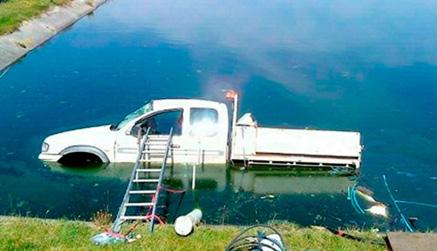
The placement of signs around the workplace is necessary to reinforce the requirement for the use of floatation jackets.
Sufficient floatation jackets should be available for all personnel who are exposed to free fall into the water. Information about types of flotation devices and jackets may be obtained from Maritime New Zealand’s website.
Measures to ensure large vehicle operators and other workers are safe include:
• Following a ground condition appraisal, a design should be prepared, setting out measures to control ground instability.
• Ensuring there’s edge protection, barriers, warning signs, and other suitable controls around any waterfilled excavation to keep people away from hazardous zones. These controls should be moved as the excavation progresses and the hazardous area changes.
Provision of rescue facilities, which may include equipping the mobile plant with features or tools for emergency use. For example, push-out windows or window breaking tools.
Installing of bunds around water and use of lighting rigs for night work are essential for safety.
Life jackets, harnesses and equipment must be checked every time they are used, i.e., they should be checked to see that the pill is in place and the gas cylinder has not been breached.
PPE should also be regularly checked. Checks should include the general condition and automatic inflation devices. A record of these checks should be maintained. Life jackets should be maintained in accordance with the manufacturer’s instructions. Life rings and throwing lines should be checked for deterioration.
Where there is a strong current, a line fitted with buoys or similar floating objects that can support a person should be extended across the water downstream from the work location and securely anchored at each end.
Rescue equipment – may include:
• lifebuoy
• a rod or hook
• lifeline
• life jackets, including one for each of the rescue crew
• audible alarm
• maybe a boat that is available for a safe and timely rescue Guard against drowning



If you’ve ever worked outdoors in cold, wet weather, you probably know the virtues of layered clothing. Layers not only make it easier to remove or add garments as the temperature changes, but they also trap warm air close to the body.
That insulation can save your life, particularly in wet conditions.
• When exposed to rain, snow or even the spray from hoses, a worker can experience hypothermia even when the ambient temperature is well above freezing. The risk is even greater when someone falls into cold water.
• Everyone on the worksite should know the warning signs of hypothermia: uncontrolled shivering, clumsiness, confusion and slurred speech. Workers should be encouraged to take regular breaks, from cold, wet conditions, inside a heated building.

If you work close to water deep enough for drowning, you should have basic rescue gear on hand, at any worksite provided, at regular intervals, and ring buoys attached to at least 90 metres of line.
Another example of simple rescue gear is a shepherd’s hook or pole to pull a drowning victim to safety.
Ensure employees working around deep water know how to swim, and someone on the job should have basic CPR training. Give everyone a chance to earn their CPR certification at least every other year and encourage people to participate.
Water and electricity are not a good mix, but it’s inevitable that the two will meet at many worksites. Indoor swimming pools require electric lights, for example, plus electric tools for maintenance and repair. All electrical cords should be properly insulated to meet outdoor weather standards. Electrical outlets and circuit boxes should have ground fault circuit interrupters. These handy devices will cut the current if they sense a waterinduced diversion of electricity.
Working close to sewerage or effluent ponds can pose other risks, such as health and contamination. Increase hygiene awareness and how you can protect yourself. Falling in can be an added risk as you will sink more quickly and are harder to see.
Awareness and common sense can go a long way to ensuring a safe workplace, even one with water hazards. Knowledge is the most important tool at your disposal to ensure safety in the workplace. If you educate yourself on potential water-related hazards, you’ll be better able to recognise them where they crop up.
We have had the odd Ute moving swiftly toward a riverbed when the grass was not as dry as yesterday.
Take care out in the workplace teams and if you are lucky enough to build a swimming pool, we hope you get a cold beer and a dip when you have finished the job.
Take care out there team.
Deb and the team at Rural Safe

www.ruralsafe.co.nz

We’re not out of the woods yet with regard to tough economic times. What should small and medium-sized businesses (SMEs) be currently focusing on when it comes to their finances?
According to Morgan Strong, General Manager – Commercial for UDC Finance, it comes down to the two Cs – cashflow and costs.
When considering finance as an SME, you will reap the benefits if you get the basics right first time. First and foremost, have a plan. Know where you want your business to go and what you need to do to get there.
“It is important that you demonstrate you know your industry. Successful SMEs tell us that you don’t need to know everything, but you do need to have the right people in your corner”, explains Alistair. “Successful SMEs also stress the importance of good financial reporting. Make sure you have all the relevant, up-to-date paperwork on your business’ finances. As a lender, we look at the so called ‘4 Cs’ when we’re assessing a credit application - character, capability, capacity and collateral”.
Getting the best out of a lender will be easier if you understand what information a lender wants from you. Some of the key information includes:
• A basic overview of your business and its owners
• Any key changes, past or proposed
• How your business works
• Regional and industry insights, and future plans
• How much finance you are seeking and what impact this will have on your business
• Financial information (see below)
• What security you are offering.
“A good lender should ask open questions and be a good listener”, Alistair states. “We’re interested in your medium to long-term goals; we want to understand more than the single transaction”.
Financial information is key to lenders understanding your position and ability to repay your loan. This financial information includes your balance sheet and profit & loss statements, your debtors and creditors, and your cashflow statements. A lender will also likely request financial projections.
“Finance providers like UDC need to be responsible lenders”, says Alistair. “Businesses often wonder why they are getting asked for projections when their business is making money. It is important to understand that profit is not cash. Cash is king, and it is required to pay your financial obligations ranging from loan payments through to wages”.
There are numerous types of loan payments and structures that can be considered for an SME, and a good lender will present the different options available to you. For example, UDC offers:
• Seasonal payments
• Balloon payment

we want to work with you to come up with the best solutions. This involves having a good relationship and great communication from both parties; it’s a two-way relationship”.
If a SME gets the basics right, understands what the lender wants, understands their financial information, and clearly communicates this information, they are on the path to getting the best out of a lender in these challenging financial times.
• Interest rates, fixed or floating
• More sophisticated asset finance products as opposed to simple term loans.
It is no secret that times are currently tough for many businesses. UDC recognise this and has been supporting many of their customers through this downturn.
“Anyone can lend money in good times, but at UDC we pride ourselves on working with our customers, asking questions and looking for solutions”, Alistair explains. “Of course, we must have comfort that you understand your business and the implications you could be facing, but
The team at UDC Finance is focused on lending to key industries that are asset-intensive and require specialist understanding, including the road transport industry, which UDC has been working alongside for over eight decades. Contact details for all UDC Commercial Managers can be found on the UDC website. UDC representatives are located up and down the country, so you can get in touch with your local representative, who understands your region, to have a chat and take it from there.


Following legislation change in December 2023, New Zealand employment law now allows all employers to use a trial period, no matter what the size of the organisation.
Trial periods (if introduced legally) enable an employer to dismiss an employee up to 90 days into the employment relationship and prohibit the employee from then raising a personal grievance for unjustified dismissal. This article summarises key issues for an employer to get trial periods right. This is critical as case law makes clear that trial periods will be strictly interpreted, and many employers are still being held liable for unjustified dismissal claims through the invalid use of a trial period.
What are the requirements for a legally valid trial period?
Sections 67A and 67B of the Employment Relations Act 2000 set out the legal requirements for 90-day trial periods.
Trial periods can only apply to new employees:
• The employee must not have worked for the employer previously. This includes past casual, part-time or fixed-term work for the employer.
• Employers can come unstuck where an individual was employed a long time ago by the same entity, or the employer has changed its company name so that the employee’s CV may present a different employer entity.
Tips for employers: Recruitment processes should check there is no pre-existing employment relationship. Business purchasers need to do due diligence to consider the nature of the purchase and whether an existing employment relationship arises.

• A trial period must be agreed in writing between the parties before the employee commences work. If the employment agreement contemplates signatures by the parties, the agreement must be signed. If signatures are not possible, the employer could request that the employee email explicitly stating that they agree to the terms.
• The employment agreement must include a valid notice period. Provided it is clear, notice of termination under the trial period may be different to the general termination provision in the employment agreement.
• The trial period must be in the agreement and state (1) that the employer may dismiss the employee in the first 90 days of employment, in which case there is no entitlement to bring a personal grievance for unjustified dismissal; and (2) the date on which the trial period starts. The parties may agree to a period of less than 90 days, provided this is clearly set out in the written terms.
• Employees should be given written notice of their right to seek advice on the terms of employment and a reasonable opportunity to review the terms and seek this advice.
Tips for employers: Check the drafting of trial periods in employment agreements to ensure the clause is valid, and ensure the agreement is signed before the day an employee is due to commence work. Check if an employee is a union member employed on a collective agreement, in which case there cannot be a trial period introduced inconsistent with the collective employment agreement.
When should the employment agreement be provided?
• If an employee is offered and has accepted a job without mention of a trial period, the employee may be deemed to be an employee, and any later provision of a written employment agreement - including a trial period - may be invalid. It does not matter if the offer was verbal or in writing.
• The employment agreement should be given to the employee days in advance of the commencement of work, noting
“ The employment agreement must include a valid notice period. Provided it is clear, notice of termination under the trial period may be different to the general termination provision in the employment agreement
the inclusion of a trial period and the right to seek independent advice on the terms.
• Tips for employers: Don’t make informal offers of work to potential employees before providing an employment agreement. Ensure that the offer of employment is in writing, with attention drawn to the valid trial period in the agreement. The employee should be told of the right to seek independent advice on the terms and provided a reasonable opportunity to get the advice.
“ With employers still being found liable for trying to dismiss under invalid trial periods, it is helpful for employers to understand common pitfalls. to the next opportunity
The employment agreement must specify when the trial period starts. For example, this can be from the date the agreement is signed or from the date work starts.
Parties to the employment relationship must act in good faith. Employees on a valid trial period must be treated the same as employees who aren’t.
With employers still being found liable for trying to dismiss under invalid trial periods, it is helpful for employers to understand common pitfalls. This is just a snapshot of the cases heard by the Employment Relations Authority and Employment Court, where employers were unable to rely on a 90-day trial period to prohibit a dismissal because the trial period clause was deemed invalid.
• An employee has worked for the employer previously.
• The employee was informed about the 90-day trial period after they accepted a verbal or written offer of employment.
• The employee was not given a written employment agreement.
• The wording of an employment agreement does not comply with section 67A of the Employment Relations Act.
• The employee was not advised they were entitled to seek independent advice about the agreement and given a reasonable opportunity for that to happen (in breach of s63A of the Employment Relations Act).
• The employee did not sign the employment agreement or did not sign the agreement until after starting work.
• The employer gave notice after 90 days.
• The employment agreement referred to a trial period of 3 months, not 90 days, and notice of dismissal was given at 3 months, which was 91 days and therefore fell outside the 90-day statutory timeframe.
• The employment agreement referred to a probationary period, not a trial period. (Language matters: these are not the same).
How to give notice to end employment subject to a 90day trial period
If notice is not given by the end of the 90-day trial period, the employee is no longer on a trial and their employment will continue.
If an employer gives notice of the end of employment and the trial period is found to be invalid, the employee may raise a personal grievance for unjustified dismissal. Employers are required to:
• Give notice in accordance with the employment agreement, including the correct amount of notice and following any other requirements in the written agreement.
• Tell the employee clearly and unambiguously how and when employment will end.
• If an employment agreement allows for payment in lieu of notice, this does not override the obligation to give the employee notice of the end of their employment under the 90-day trial.
Tips for employers: Employers are wise to schedule reviews of the trial period so that timeframes are not missed. The employer is then in a position to consider how the employment relationship is progressing, any matters that should be raised in good faith with the employee, and/or whether notice of dismissal under the 90-day trial period is to be issued. If giving notice, ensure that it is consistent with the requirements of the trial period.
While notice must be given within the 90-day trial period, the employee’s last day of employment may be outside the trial. For example, a 90-day trial is in place, and the employee is given notice
of termination on the 88th day, with one week of notice (as provided for in the employment agreement), which takes the end of employment beyond 90 days.
While section 67B(5) of the Employment Relations Act expressly excludes the requirement to give a written statement of the reasons for dismissal under a trial period, an employer is still required to act in good faith during the employment relationship, including during the notice period. This includes not being misleading, together with being responsive and communicative; therefore, if an employee requests why they are given notice, the employer should advise their reasons.
90-day trial periods are not a protection against all employee claims
While trial periods prevent a personal grievance or other legal proceedings about a dismissal, they do not protect an employer against all claims. An employee may still raise a claim relating to breach of statutory entitlements such as minimum wage or the Holidays Act, or relating to breach of the employment agreement.
Employees may also raise a personal grievance claim for unjustified disadvantage, breach of health and safety obligations, or breaches of good faith.
When used correctly, a 90-day trial period is a useful tool. However, given the frequency with which trial periods are still being incorrectly drafted, implemented, and then invalid notice given, employers are wise to seek advice when contemplating negotiating a trial period or dismissal under a 90-day trial. Trial periods have been strictly interpreted upon challenge, and many employers are still being found liable by the Employment Relations Authority and Employment Court for having made errors in how they have implemented a trial period, resulting in costly awards against them.
If you need advice or assistance, the specialist DTI Lawyers employment law team can be contacted by phone on 07 282 0174 or email reception@dtilawyers.co.nz

You need true grit and determination to be a fencer, especially in the unforgiving terrain of the far north of Scotland.

Mark Blair of MFence, a contracting business based in Lairg, exhibits these traits in spades, together with an enthusiasm for the job that is positively infectious.
When I spoke to him in early January he was ploughing on through the pain barrier after a fall a few days earlier. Nothing was going to stop him. There’s a job to be done!
Lairg is a village in central Sutherland about 40 miles south of the far north coast and is a fascinating detour from the welltrodden (and highly recommended!) North Coast 500 route that encompasses some of the finest scenery you could ever wish to witness.
Inspirational as it may be, it’s a tough landscape for anyone working on the land and Mark, 35 this year, has been grafting in these parts for the past six years.
Mark explained: “I moved up here from Perthshire to be with my wife who is from Lairg originally and I have settled in very well.
“It was a challenge at first. You don’t want to step on anyone’s toes as there’s a lot of very good and established fencing contractors up around the Highlands, but after completing 400m of stock fencing on my first job here, I was up and running with a number of jobs arriving at my door on the back of it.
“It’s about 90% agricultural, stock and forestry fencing together with a fair bit of timber garden fencing thrown in on behalf of farmers, estates and commercial groundworks firms. My job occasionally takes me as far south as Aviemore and right across and up to the glorious west and north coasts, although most of the work I have is no more than a 20-40 minute drive away.
“No two jobs are the same. One week you could be working on 1000 metres of stock fencing, and the next job could be a deer fence either near a road or miles out on a hill. There’s a wide variety of fencing work to be done in a region where nature is always in charge.

“There’s a lot of rocky, hard ground around here and that’s where the machinery I’ve got comes into its own,” added Mark, who runs a Quickfencer on a smaller Kubota tracked dumper and timber trailer and a Morooka MST 300VD tracked dumper with a Wragg commander XL equipped with the Rock spike and the heavier hammer as well as a quad bike and various fencing trailers set up for each job at hand.
Mostly working as a one-man band these days, Mark added: “I’m very lucky with the equipment I have. It lets me do the job that would normally require at least 2 or 3 workers. There’s plenty of good fencers around, so on larger jobs I usually sub-contract and bring in hired help when needed.
“I’ve had full-time employees over the years, but now I’m just going for the more simple approach and working on my own for the time being whilst maintaining a very busy work schedule.
“The biggest challenge is time and finding that work-life balance. We’ve got two young children, and I’m always mindful of the importance of spending as much time with them as possible, whilst maintaining a business that provides a crucial service to so many good folks around here.
“Few truly appreciate the hard work and dedication that goes into this line of work. The planning and logistics that takes place behind the scenes can sometimes be taken for granted. There’s always people who think you can just rock up and deliver

“ Few truly appreciate the hard work and dedication that goes into this line of work

a fence just like that, but every contractor knows that there’s a lot more to this job.
“The key to my success is to get the foundations right before finishing a quality fence that will last for many years to come.
“That said, it’s a good life, and I wouldn’t change it for the world. Whatever the weather throws at you and no matter how difficult the landscape, I never lose sight of the fact that I’m a lucky man.
“You’re only as good as your last job, which is motivation enough to ensure you maintain consistently high standards. Word travels fast in places like this. It’s so important to have a quality approach to everything you do.
“It’s a constant learning curve, and there’s a lot of older contractors around here with more experience than me. I have a lot of respect for them, with many carrying on to a ripe old age,” concluded Mark.
Highland grit and determination really are the hallmarks of this particular contractor who will continue to make his Mark on this spectacular scenery for decades to come.
mfencescotland.co.uk
Article republished with permission from:


Bruce began his fencing career in Mangakino, securing a contract with the Department of Lands and Survey, stripping out fences on a failed dairy unit, and returning the land to sheep and cattle production. This task required rolling up the five barbed wires that were on these fences, then digging out the posts and strainers, being paid 50c per metre.
From there, Bruce went on to do many contracts for Lands and Survey and Maori Affairs in various parts of the Waikato. He moved to Waiuku and armed with an old David Brown tractor and a newly purchased Kinghitter post driver, he plied his trade in the Franklin area, relying on word of mouth to extend his client base.
Finding most of his work in rough country, with a lot of his work requiring the removal of hedges and replacing the fences that were buried under them, he purchased an old Bristol bulldozer with a handy blade and mounted his post driver on the rear of it. The bulldozer also offered him the opportunity to

level, or bench, proposed fence lines before putting up new fencing. The Bristol was eventually replaced by a Massey Ferguson 200 bulldozer. From all accounts, Bruce was one of the first fencing contractors to fit the post driver to a track machine.
Although handy on the job, moving the bulldozer from farm to farm proved difficult, having to be transported on the back of a truck. He bought an old TK Bedford for this task, but because he could be months on one job, when it came to firing up the truck to do the move, the truck usually wouldn’t go, so he decided to engage a local carrier to do the moves for him. The trucking firm dreaded getting the call from Bruce, as more often than not, a decent loading platform was unavailable, and getting his bulldozer up onto the deck from low down was very hard on the trucks.
The jobs Bruce took on included sheep and cattle yards, fencing around bush blocks, converting traditional sheep or cattle farms to either goat or deer setups, and also what he called ‘the cream’: fencing small blocks for the lifestyle townies. ‘Good payers they were’, he would say, as they considered a good fencer the same as plumbers, carpenters, mechanics, etc, and were happy to pay similar rates as these other trades, especially after they had witnessed the physical exertion required to do their fencing.
In 1984, Bruce decided he was keen to put his handiwork on public display, and so entered the first of five fencing competitions held at the Franklin Show in Pukekohe. While Bruce did not compete for long, he was relatively successful.

Franklin Show:
• 1984: 2nd
• 1985: 1st
National Fieldays Silver Spades (with Colin Browne)
• 1984: 6th
• 1985: 3rd
Gallagher’s Electric fence doubles competition (with Colin Browne)
• 1985: 1st
• 1986: 1st
Earning themselves overseas trips on both occasions
Because they were now New Zealand power fencing champions, Bruce and Colin were offered a job in San Antonio, Texas, for four months on a large cattle station, carrying out power fencing.
In our local area, i.e. the greater Franklin, Bruce kept very much to himself, but was always revered as a very high-quality fencer and much respected by his fellow contractors and clients.
Bruce continued fencing into his 70’s, completing his last job prior to Christmas 2022. By the end of January 2023, he was diagnosed with blood cancer and courageously battled the ‘big C’ until finally succumbing to it in late November 2023, when he passed away at his beloved home.
R.I.P. Bruce.
Article written by Nick Liefting
I once overheard my husband telling someone that he loved me because I’m his best mate. Well, he lied. He has another best mate that trumps me on the daily.
Three years ago, I found a cute rescue pup from the streets in Opotiki and decided he would be mine. I called him Buddy – my buddy. He was a total nightmare. A menace. In all ways naughty. He ate the outdoor furniture, and all the cat food (daily). He also ate the new chook and the pet rabbit. He jumped in visitor’s cars and sniffed crotches. Yet his happy demeanour and gorgeous eyes still woo-ed me, and I loved him to bits. For months, I put in the hard yards and trained him diligently and daily ‘til he was somewhat manageable.
Then, for reasons I don’t understand, he decided that Shaun would be his best friend. Shaun, the one who grumped about his loud barking, who complained about his overbearingness. Shaun, who, let’s be honest, didn’t really like him at all. It all happened when I had some of my private practice clients turn up at home and wanted to avoid either Buddy jumping up and scratching their car or tying him up and listening to him bark obnoxiously.
“Hun, can you pretty please take him with you to work today?” I begged.
Well, from that day forward, Buddy went to work with Shaun. He would open the back door of his ute, and Buddy would leap in and hang his head out the window. Ready. Keen. And before long, they were like the scene from The Hangover movie, except they were “…the two best friends that anyone could have.”
Buddy’s been to many job sites.
Like the time I went to visit the site of a dog park we were building. I pulled up and squinted to see who was driving the tractor, as it wasn’t anyone I recognised. As I walked closer, I could see it was Buddy sitting in the driver’s seat, proud as punch watching Dad below ramming posts.
Another time, Shaun’s ute got stuck in some thick spring mud at a job site. When
I pulled up, I saw the tractor trying to tow the ute out while Shaun had his foot down trying to gain traction. What he couldn’t see (but I could) was mud flicking up and covering Buddy’s entire face, even his goobery tongue. Big, happy, squinty face Buddy didn’t care, he was just so happy to be in the ute with Dad.
But not all site visits with Buddy have gone well.
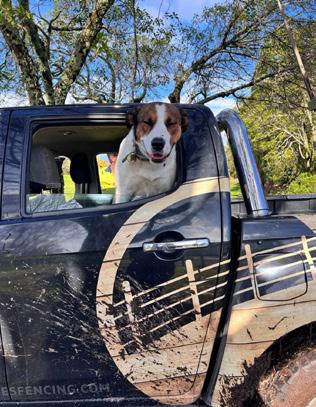
Like the time Shaun went to quote a job at the shit ponds. As he was talking to the project manager of the council and main contractor of the job, Buddy went exploring. A while later, they heard Buddy howling his head off…. splashing. Which could only mean one thing.
He’d fallen in.
The sides of the shit ponds are a rubbery material, so Buddy couldn’t grip to climb out. Shaun and his potential (questionable now) clients made a human chain to lower into the pond to pull out a very smelly and terrified Buddy. Before anyone could stop him, he ran to the group of men and proceeded to shake all the human waste off himself and onto our not-very-likely-now clients. Shaun apologised with as much control as he could muster and then took Buddy to the fire hose. Surprisingly though, the quote

got accepted. Those guys will be telling that story for years, no doubt.
The great thing about Buddy is that he is such a friendly dog that Shaun never worries about him growling/nipping at the many people who stop to pat his head out the window of his parked ute. Except one time when they were at ITM. Shaun was inside buying materials and heard a female scream. He ran to the ute to see two teenage girls with Buddy. But they were laughing as one explained, “He licked my face and slobber got in my mouth!”
Buddy goes everywhere with Shaun, so much so that he’s become somewhat of a mascot for Davies Fencing. His big boof-head hanging out the window of the black ute with our recognisable branding on it, is iconic around town. He’s like free marketing. In fact, he’s scored us numerous jobs when we’ve nipped into the supermarket and someone has come up to pat him at the window, seen the branding and then waited to meet Shaun to ask for a quote, which turns into a job, which turns into a regular client.
While I’m still a bit salty that Shaun stole my dog and replaced me as his best friend, I’m so grateful for the joy, the laughs and the work that Buddy has brought into our lives. Every business needs a Buddy.
Article written by Angelena Daviesauthor helping children and adults to access “flow” so their lives are easier and more fun.
A1FenceworX (Wellsford)
Shane Beets
t. 09 423 7585
m. 027 625 5383
e. admin@a1fenceworx.co.nz
Barakat Contractors Ltd (Te Kauwhata)
Dale & Carl Barakat
t. 07 826 4461
m. 027 473 5513
e. dale@barakatcontractors.co.nz w. barakatcontractors.co.nz
Ben Haugh Fencing (Geraldine)
Ben Haugh
t. 03 693 8088
m. 021 523 291
e. info@bhfencing.nz
Central Fencing (Canterbury)
Nigel Broadbridge
t. 021 433 623
e. nigel@centralfencing.co.nz
w. centralfencing.co.nz
CPC Fencing Ltd (Northland)
Phil Cornelius
t. 09 4332644
m. 027 274 4188
e. cpc.fencing@yahoo.co.nz
Custom Fencing Ltd (Waikouaiti)
Nick Terry
t. 03 465 7212
m. 021 614 100
e. nickterryfencing@xtra.co.nz
Ewing Fencing Contractors (Oamaru)
Mark Ewing
t. 03 431 3864
m. 027 498 4049
e. mark@ewingfencing.co.nz
Fencing Solutions Waikato (Morrinsville)
Todd Sherburd
t. 07 887 5549
m. 0274 927 337
e. todd@fsw.co.nz w. fsw.co.nz
Fencetec 2015 Ltd (Te Anau / Northern Southland)
Steve Daley
m. 027 2497852
e. stephendaley03@gmail.com
Fensin Neil & Raymond Roberston (Taupō)
Neil & Raymond Robertson
t. 07 825 5747
m. 027 474 6335
e. robertson.nd@xtra.co.nz
Golden Bay Fencing (Takaka)
David Jacobson
m. 027 266 7335
e. fourjake1@gmail.com
Grant Macdonald Fencing Service (Tauranga)
Grant Macdonald
t. 07 543 3486
m. 027 494 2251
e. grantmacdonald@mclarenfalls.co.nz
Grant Scott Fencing Ltd (Te Awamutu)
Grant Scott t. 07 870 6541
e. g.scottfencing@gmail.com
Greg Burton Fencing (Cambridge)
Greg Burton
t. 07 827 8765
m. 027 427 8765
e. mazgreg@xtra.co.nz
Ground Up Services Ltd (Tauranga)
Darryn Astill
m. 027 586 9227
e. darryn@groundupservices.co.nz
Ground Up Solutions (New Plymouth)
Clayton & Sue Horton
t. 06 758 2217
m. 021 710 712
e. info@groundupsolutions.co.nz
w. groundupsolutions.co.nz
Higgins Fencing Contractors (Wakefield)
Philip Higgins
t. 03 541 9292
m. 021 222 5033
e. info@higginsfencing.co.nz w. higginsfencing.co.nz
High Country Fencing Ltd (Darfield)
Geoff Rogers
t. 03 317 8028
m. 021 640 748
e. info@highcountryfencing.co.nz w. highcountryfencing.co.nz
Jeff Joines Fencing Contractor Ltd (Kāpiti)
Jeff Joines
t. 06 364 2510
m. 027 484 4481
w. jeffjoinesfencing@gmail.com
John Baldock Fencing Ltd (Katikati)
John Baldock
t. 07 552 0763
m. 021 176 4719
e. john@johnbaldockfencing.co.nz w. johnbaldockfencing.co.nz
Landwork Solutions (Ōtaki)
Brad Joines
m. 0274955693
e. office@landworksolutions.co.nz
Noksee Fencing (Motueka)
John Noakes
t. 03 5286388
m. 027 446 4413
e. noakesjc@gmail.com
Phillips Contracting 2016 Ltd (Edgecumbe)
Josh Phillips
t. 07 304 8443
m. 027 587 3551
e. phillipscontracting@xtra.co.nz
Renner Contracting Ltd (Seddon)
Mike & Brad Renner
t. 03 577 6615
m. 021 416 798
e. rennerfencing@hotmail.com w. rennerfencing.co.nz
Steve Locke Fencing Ltd (Blenheim)
Steve Locke
t. 03 578 1927
m. 021 37 1971
e. steve@stevelockefencing.co.nz
w. stevelockefencing.co.nz
Steve Williamson Fencing (Timaru)
Steve Williamson
t. 03 686 4779
m. 027 455 3385
e. shwilliamson@actrix.co.nz
Tight Wire Fencing Ltd (Taupō)
Rex Graham
t. 07 378 5572
m. 027 318 8665
e. tightwirefencing@xtra.co.nz
West Otago Fencing Ltd (Tapanui)
Grant & Wendy Harris
t. 03 204 8285
m. 0272 866 576
e. harris29@xtra.co.nz
White Fencing Ltd (Papakura)
Tony White
t. 09 292 8064
m. 027 495 7868
e. admin@whitefencing.co.nz
w. whitefencing.co.nz



FCANZ offers a range of benefits and services to members in the fencing industry, whether you are looking for individual membership or a place for your company to prosper and grow. Becoming a member means you are supporting the industry and
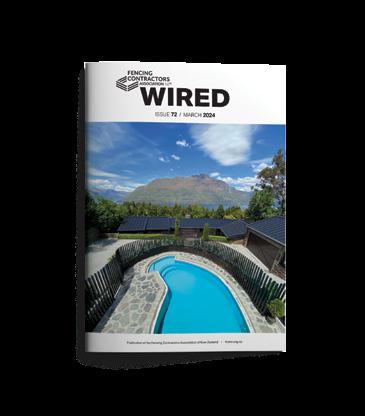
BENEFITS OF BEING A MEMBER INCLUDE:
• Your company name on the Find a Fencing Contractor section on the website
• Four free issues of WIRED per year
• Members receive Group Membership with New Zealand Federated Farmers
• Opportunity to network and communicate with like-minded people in the industry
• Access to NZQA qualifications National Certificate in Fencing
• Regional Best Practice Days
• Access to online professional development webinars
• Support from industry providers
• Heavily subsidised Annual Conference
• Trade Association of Site Safe giving a 10% discount
Join online at www.fcanz.org.nz/join
Only (NZ Residents)
+GST (for 12 months) 0508 4 32269 | admin@fcanz.org.nz fcanz.org.nz
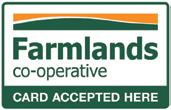

PHIL CORNELIUS (PRESIDENT)
m. 027 274 4188
e. phil@fcanz.org.nz

CRAIG SINCLAIR
m. 027 418 7693
e. craig@fcanz.org.nz

DONNA UPTON
m. 021 761 022
e. donna@fcanz.org.nz

JAIME BIGWOOD
Executive Director
m. 021 2848 223
e: exec@fcanz.org.nz

DEBBIE WHITE (VICE-PRESIDENT)
m. 027 495 7033
e. debbie@fcanz.org.nz

JANINE SWANSSON
e. janine@fcanz.org.nz

SHANE BEETS (TREASURER)
m. 027 625 5383
e. shane@fcanz.org.nz

NICK TERRY
m. 021 614 100 e. nick@fcanz.org.nz

CRAIG WIGGINS
m. 027 457 6694 e. wiggyswhatever@gmail.com

JEANETTE MILLER
Administration Manager
t. 0508 432 269
m. 027 432 2033
e: admin@fcanz.org.nz

HEATHER KAWAN
WIRED Editor
m: 022 630 8533
e: wired@fcanz.org.nz
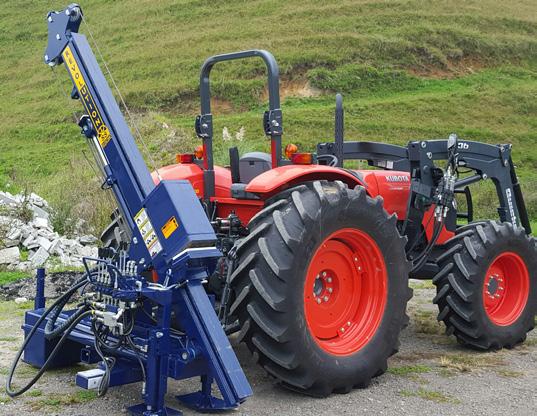
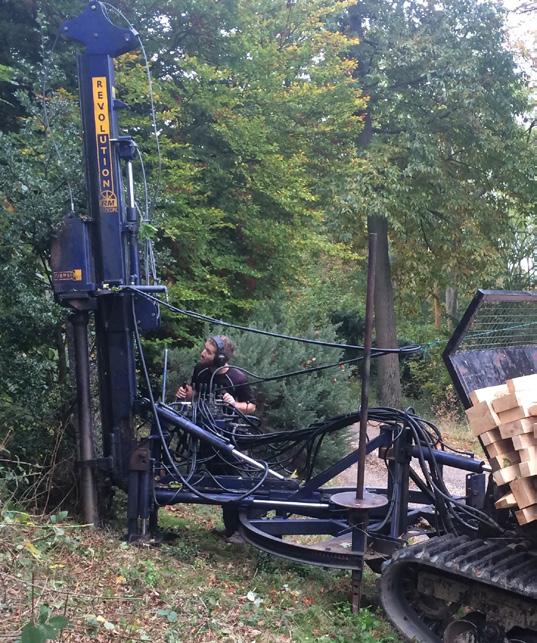
•Telescopic 180 rotational
•Telescopic Swinga rotational
•Telescopic SS sidemount
•Telescopic RM rearmount

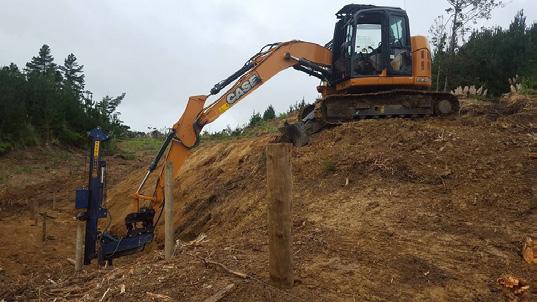
•Xtenda HORT Under Canopy model
•NETMASTER netting dispenser
•Planetary drive Auger and Rock Spike kits
•NEW RELEASE “The Wind-Up” whole fence winder













